Algeria
Good news! Algeria has relaxed its conditions of entry for foreign travelers. For years, I’ve wanted to visit Algeria, so I jumped at the opportunity to come here. To get a visa on arrival, all I had to do was book a visit to the Sahara with a local tour operator, Algeria Tours 16. After a brief campout in the desert, I was free to travel throughout the rest of Algeria. This allowed me to see Algeria’s three largest cities: Algiers, Oran and Constantine.
So, what have I learned about Algeria? It’s huge. It’s the largest country in Africa, equal to Alaska and Texas combined! Algeria is 90% desert. Most of the population lives in the green belt along the Mediterranean. The Sahara is inhabited by nomadic tribes, the largest of which are the Tuaregs.
My Algerian adventure began in Tassili n’Ajjer National Park, a barren wasteland bigger than West Virginia. To get here, I flew to Djanet, an oasis in southeastern Algeria near the borders with Libya and Niger. From Djanet, I was driven by 4×4 into the desert to see a geologic wonderland of sandstone formations and sand dunes. Note: Don’t attempt this trip in summer. November to March is when the Sahara is comfortable.
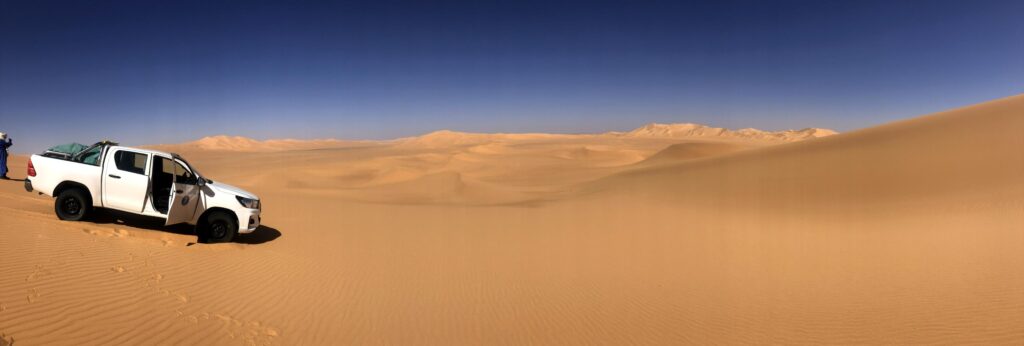
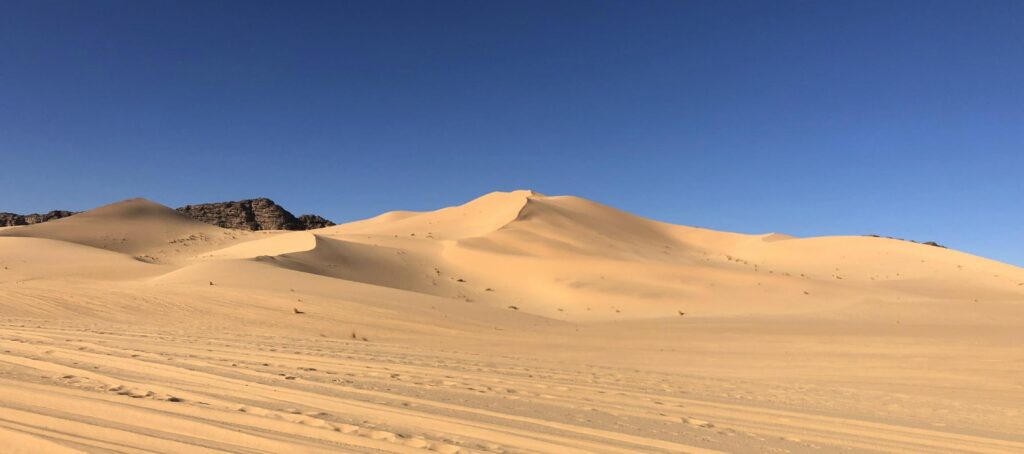
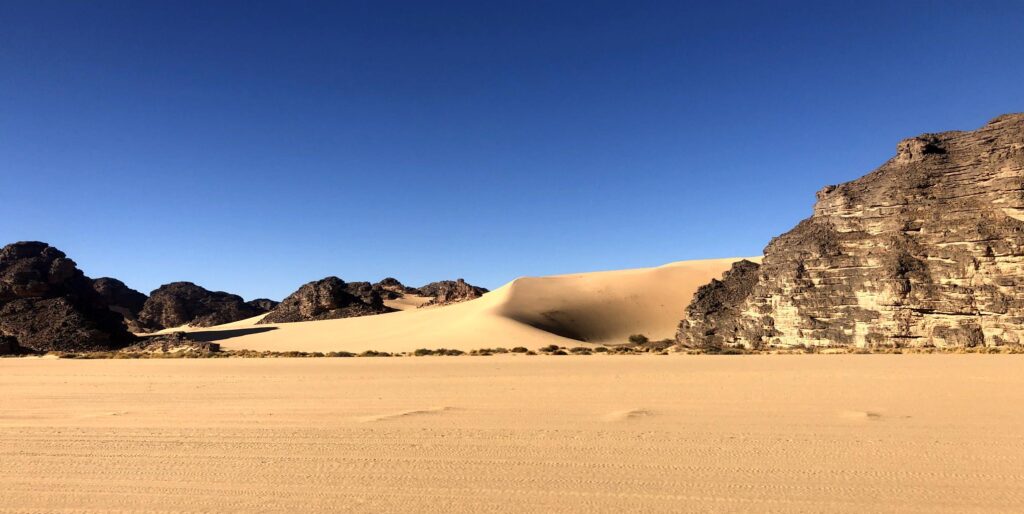
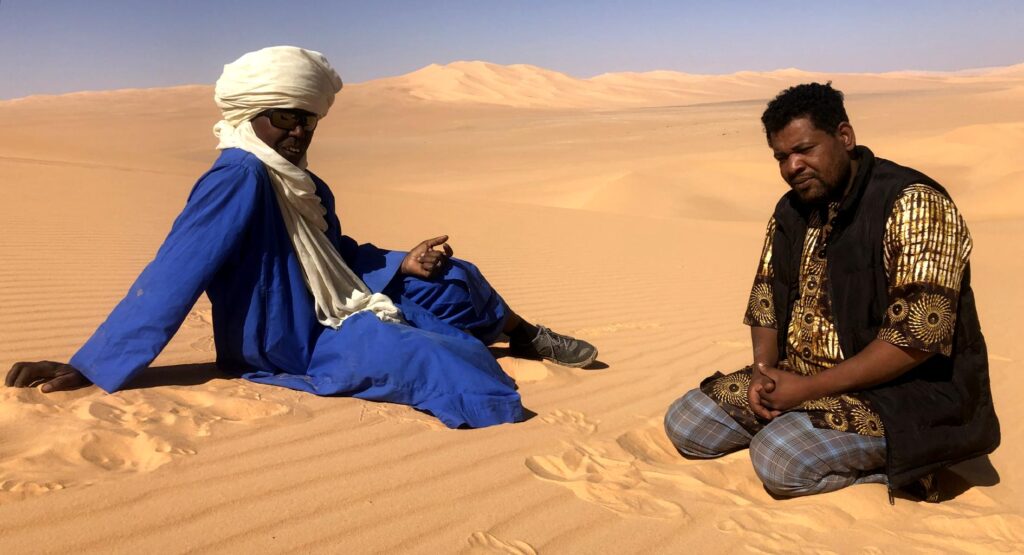
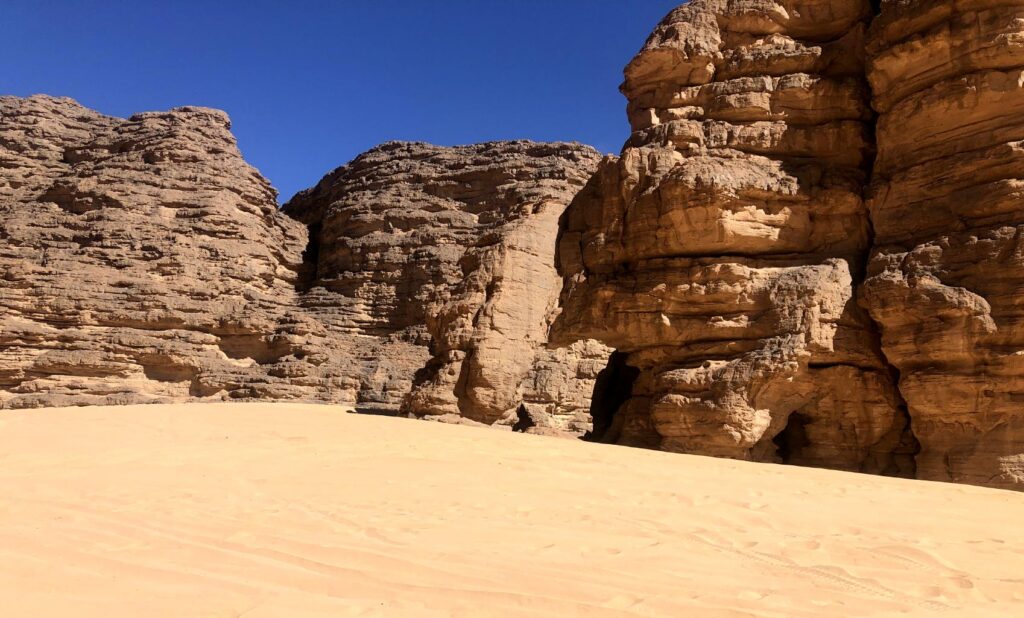
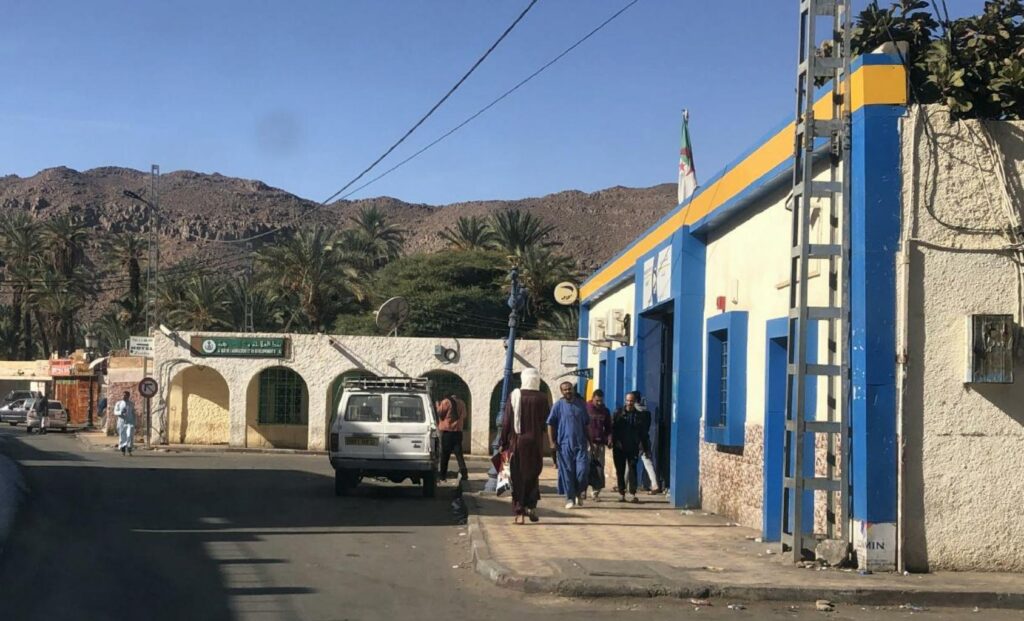
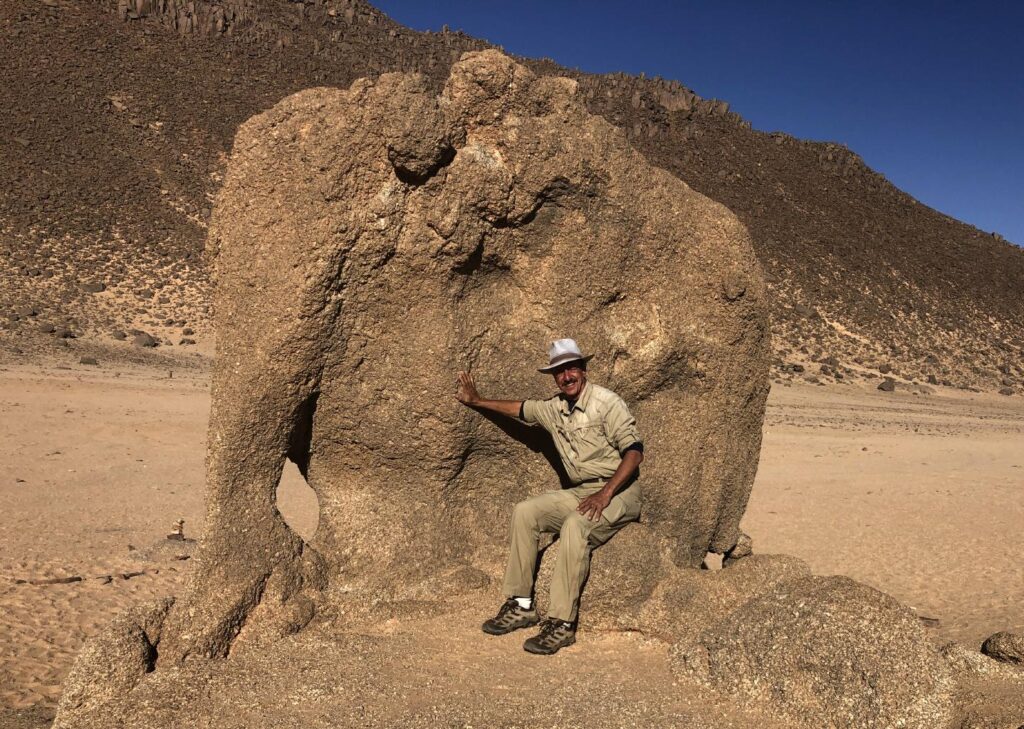
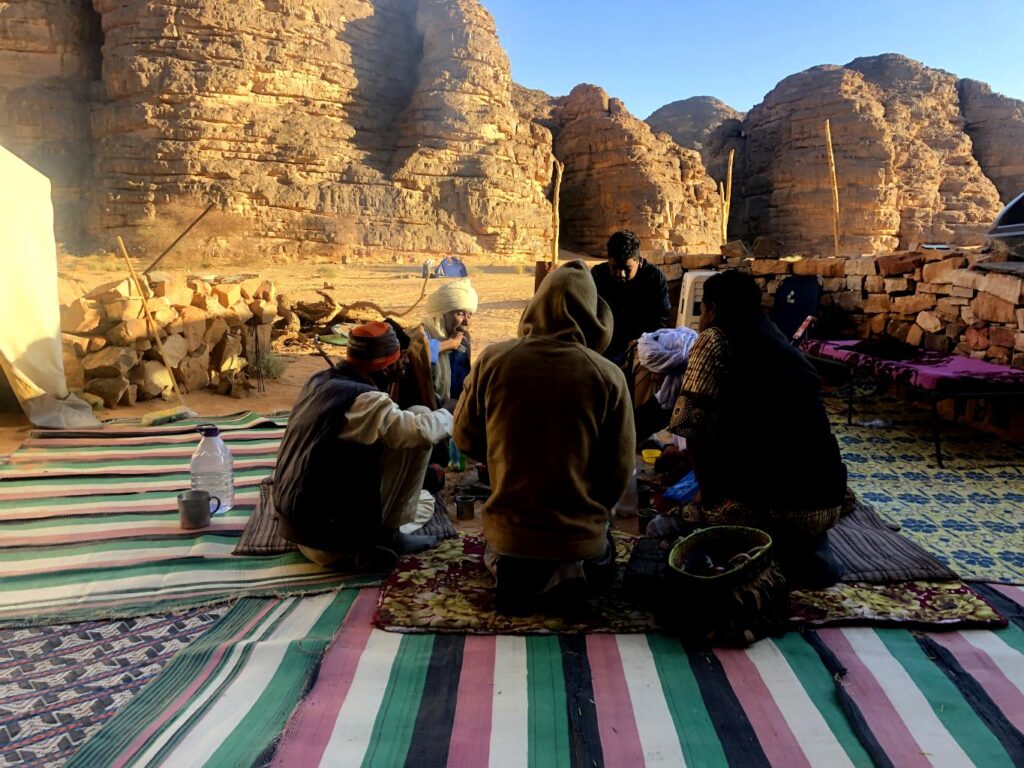
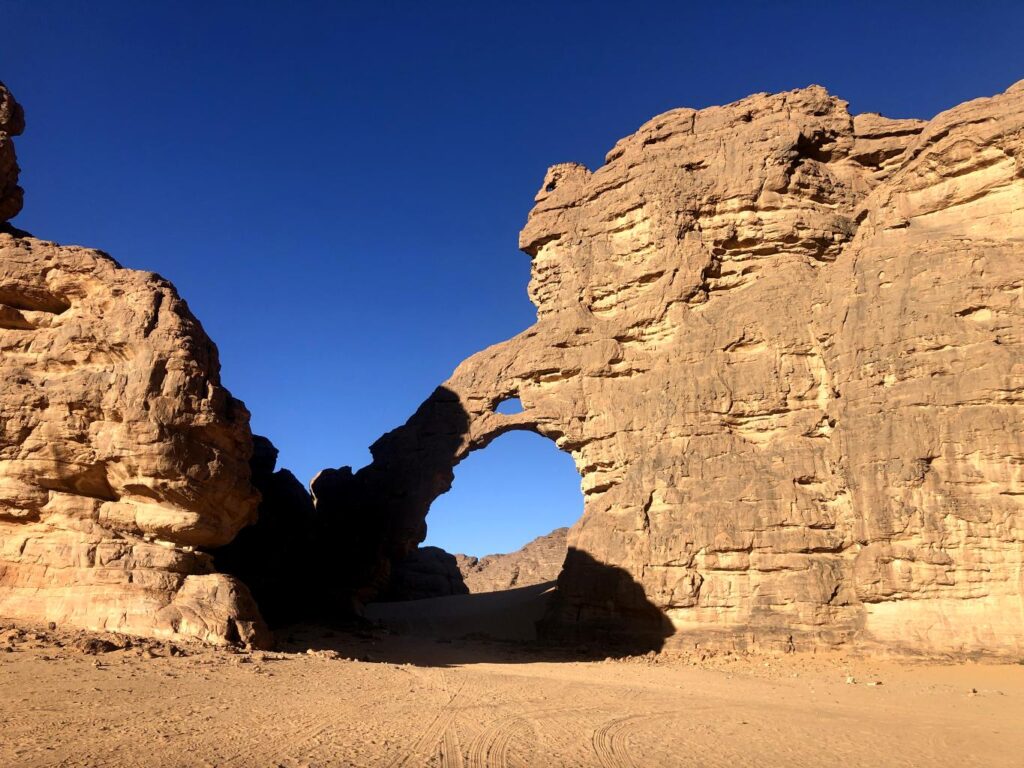
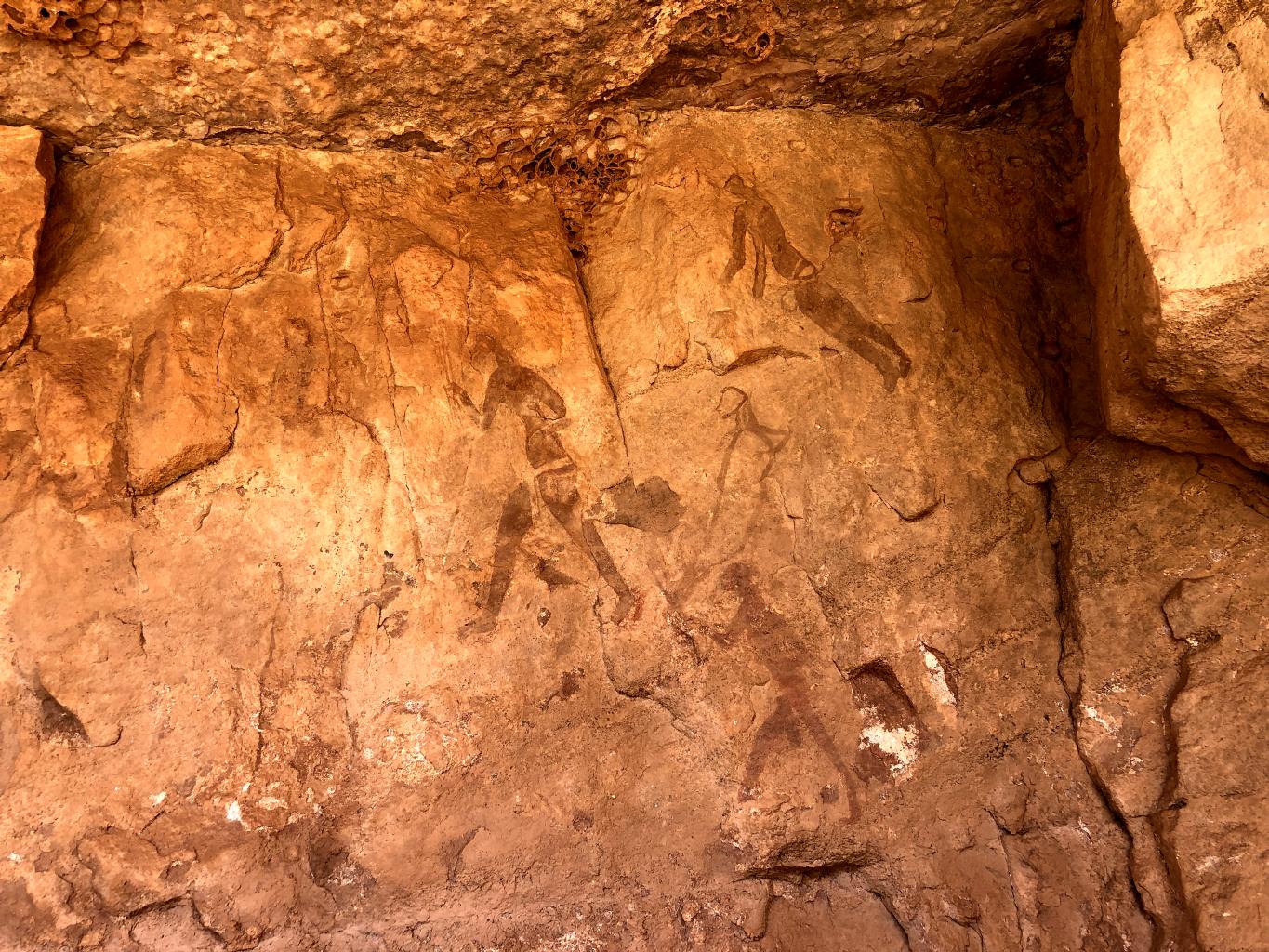
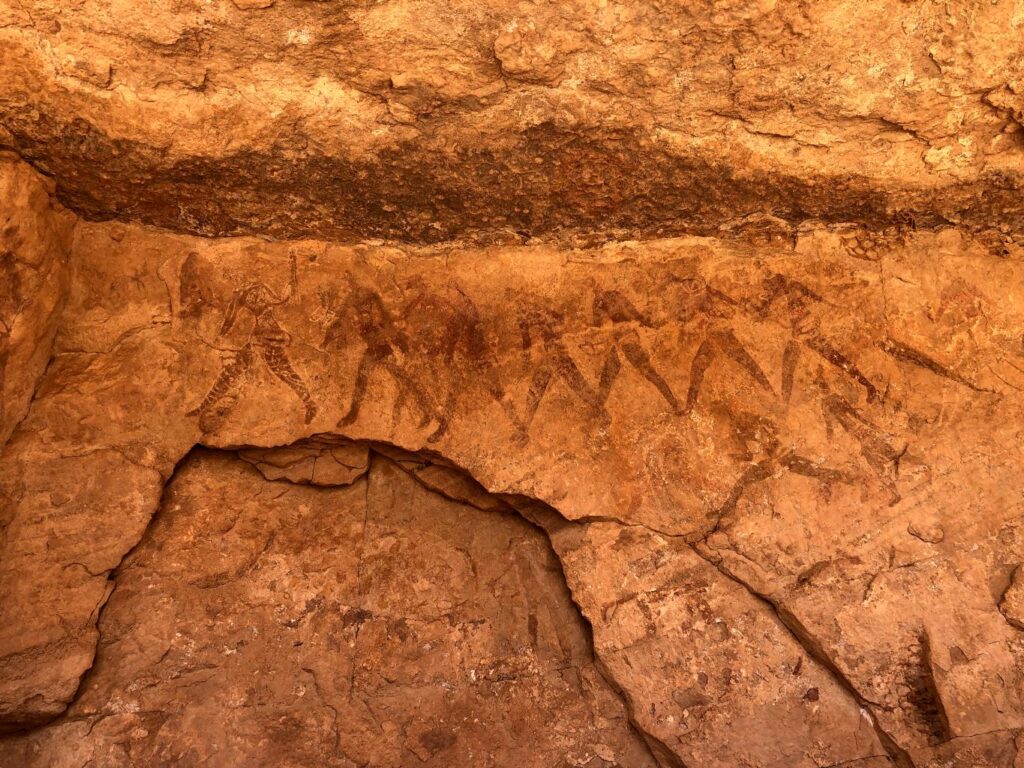
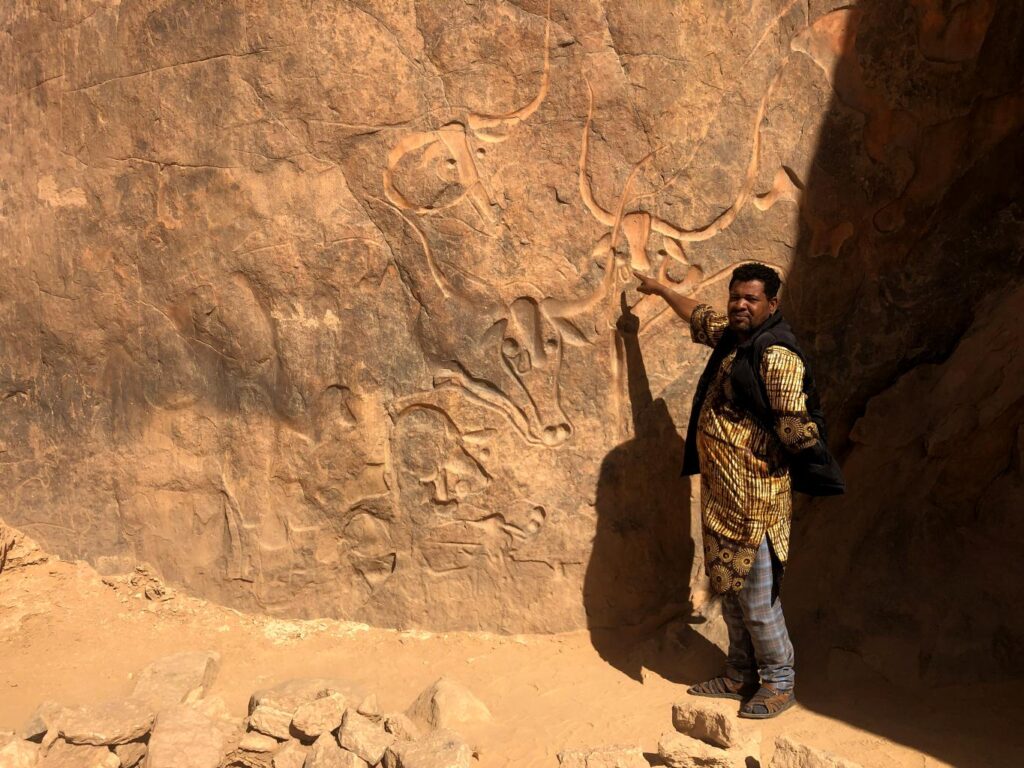
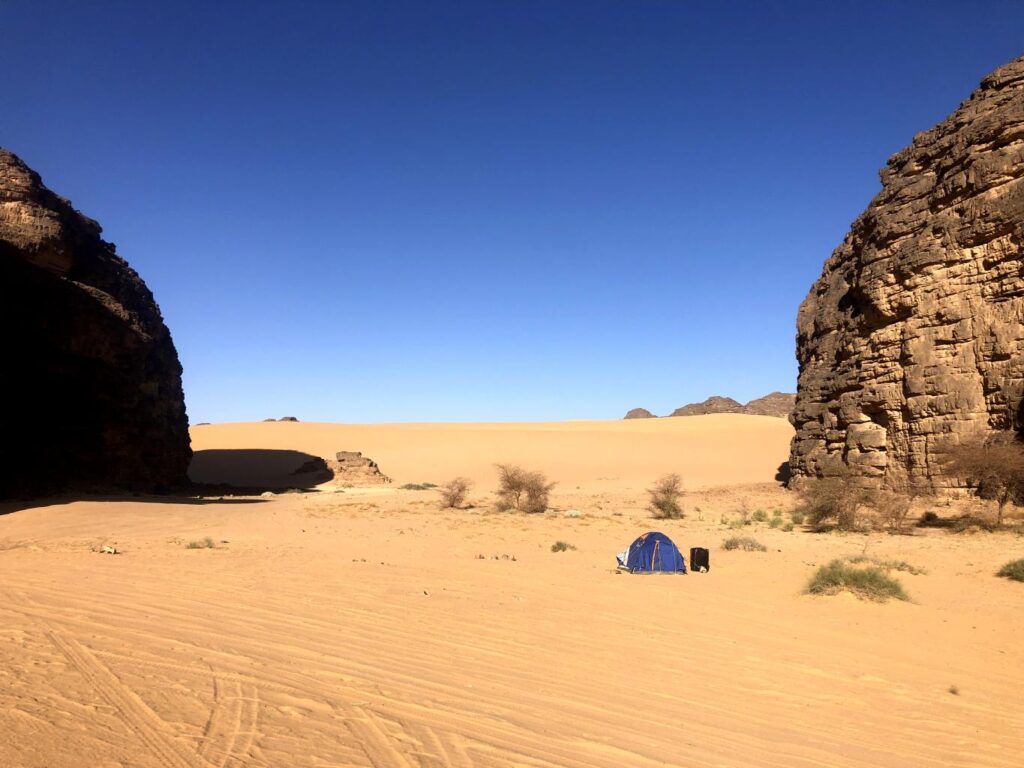
were brilliant at night.
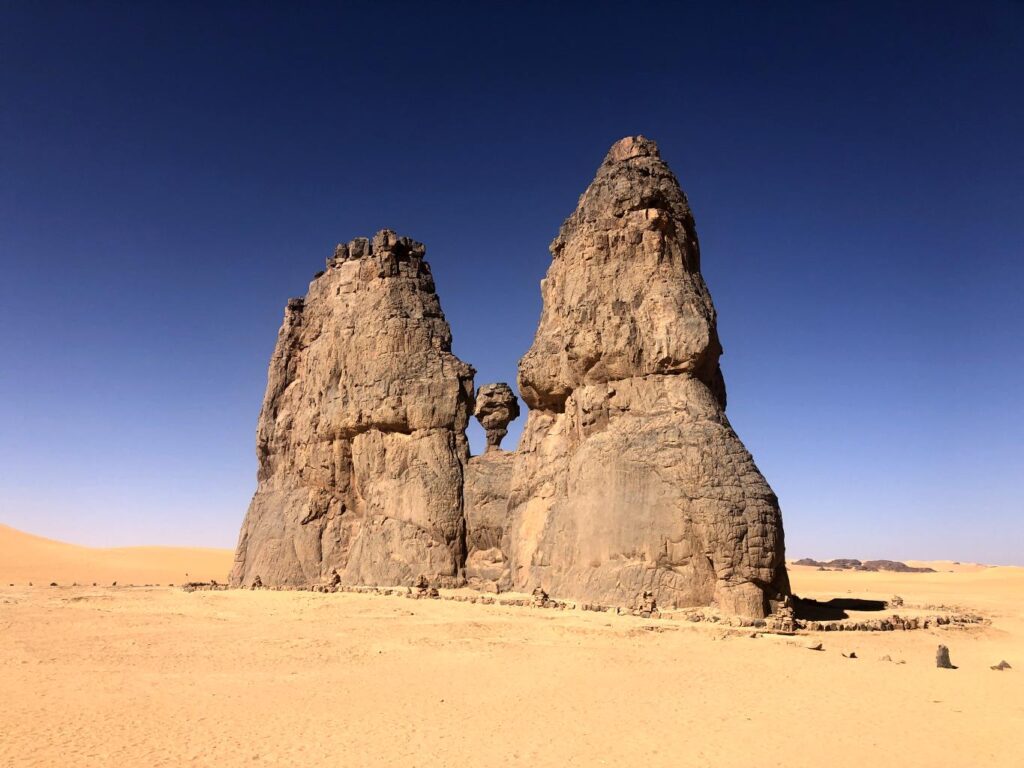
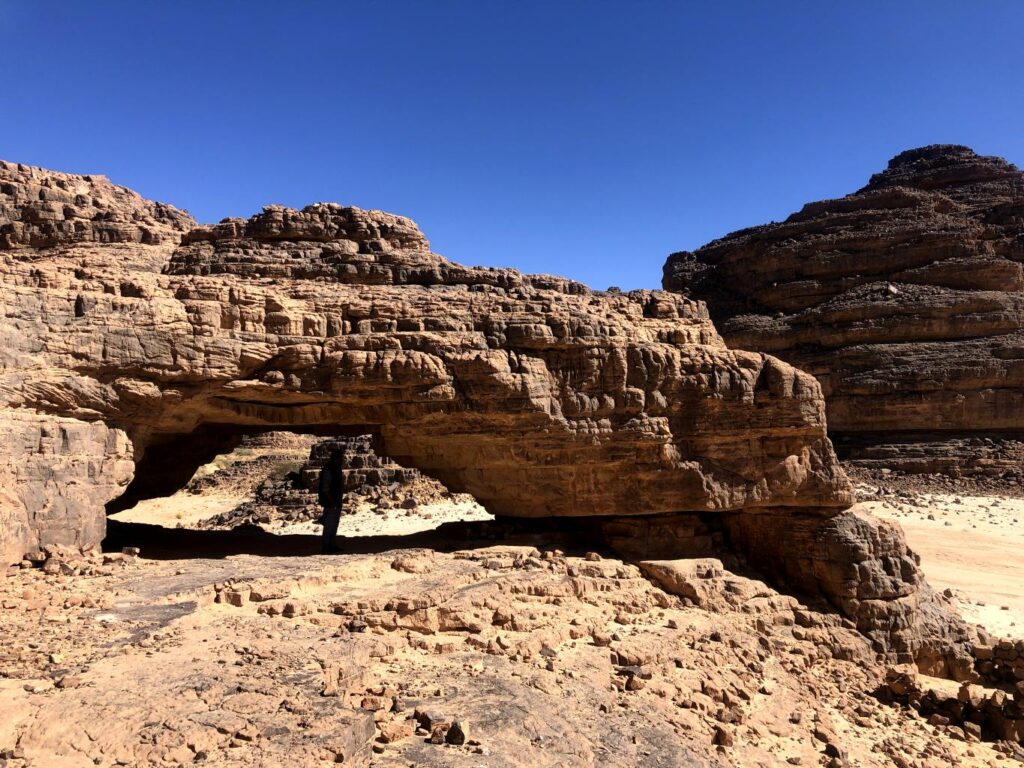
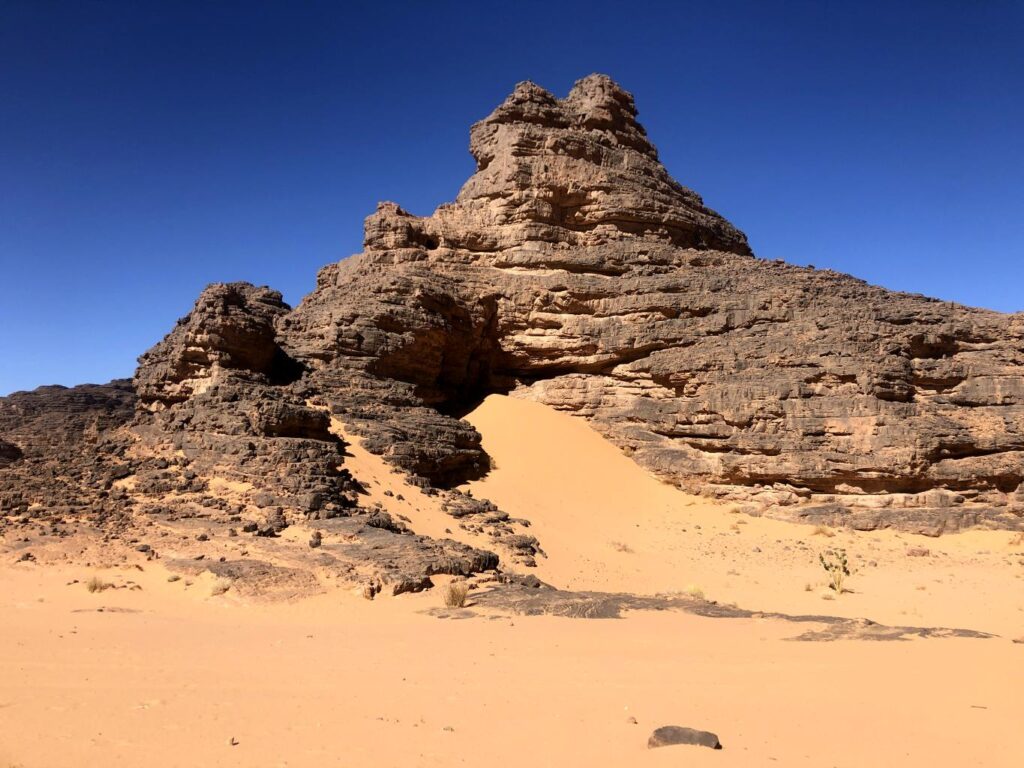

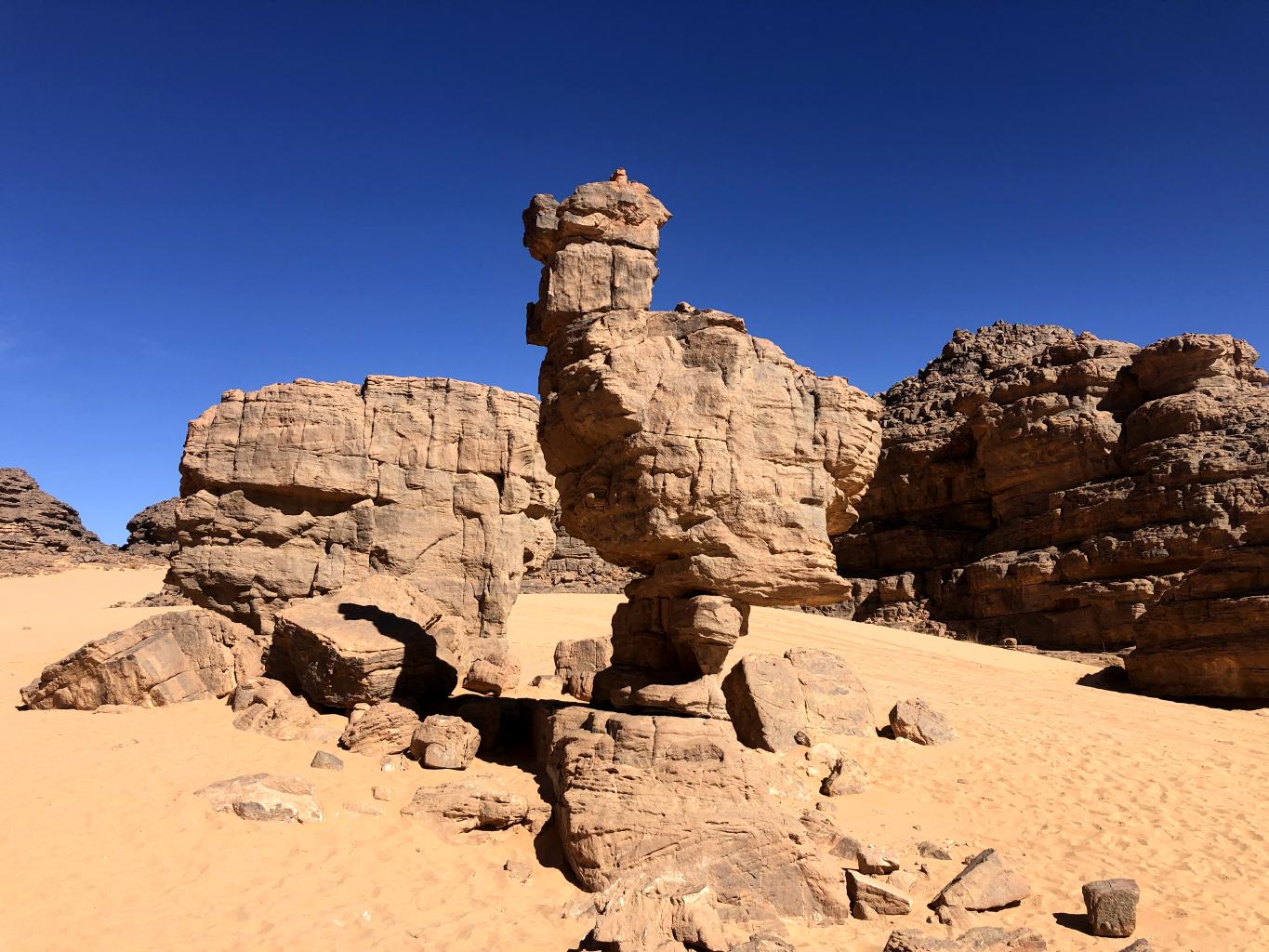
The landscape in this part of the Sahara is breathtaking. Please watch the video below. I’ve condensed 12 hours of driving through Tassili n’Ajjer into 12 minutes. The soundtrack is composed and performed by Tuareg musicians.
Next stop, Constantine,. This city straddles a canyon 1.8 km long and 200 meters deep. The canyon is crossed by seven man-made steel bridges and three natural sandstone bridges. At the bottom of the canyon is a roaring whitewater river. The pedestrian walkways along the canyon rims are perfect for a cool afternoon stroll. Although I understand why a city in desert country might be built near fresh water, the engineering and logistics of perching a city on the brink of a precipitous canyon are challenging. In addition to its astonishing canyon, Constantine has charming French colonial architecture, a gorgeous mosque, delicious food and friendly police — who were pleased to give me a free escort everywhere I went in Constantine!
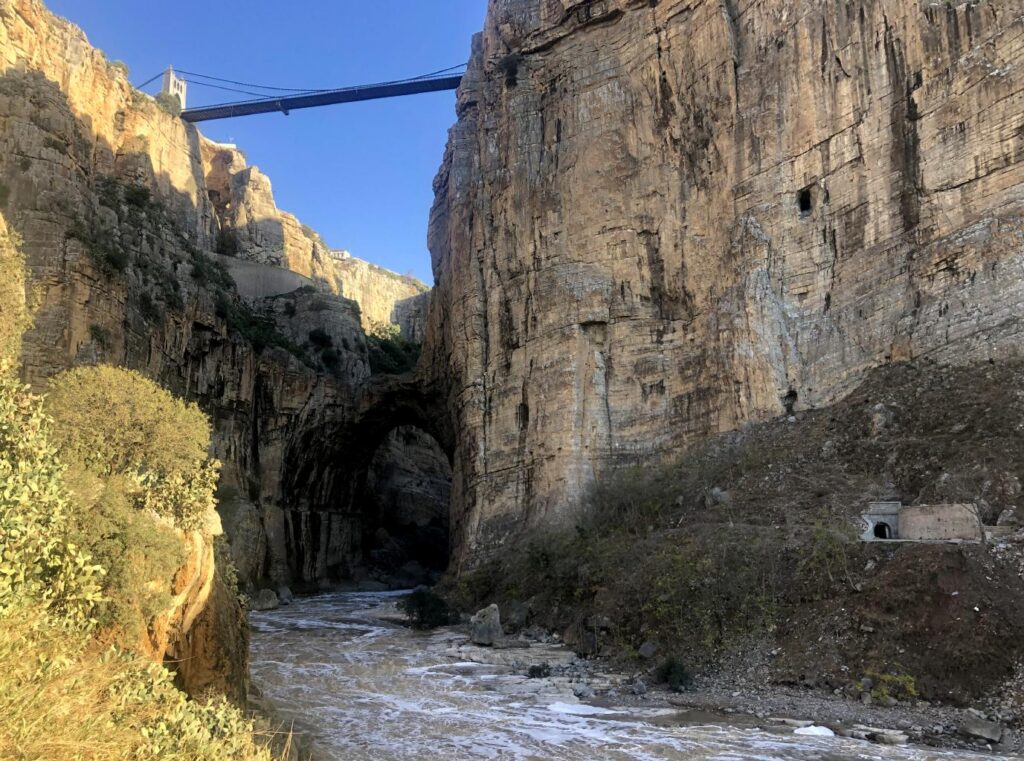
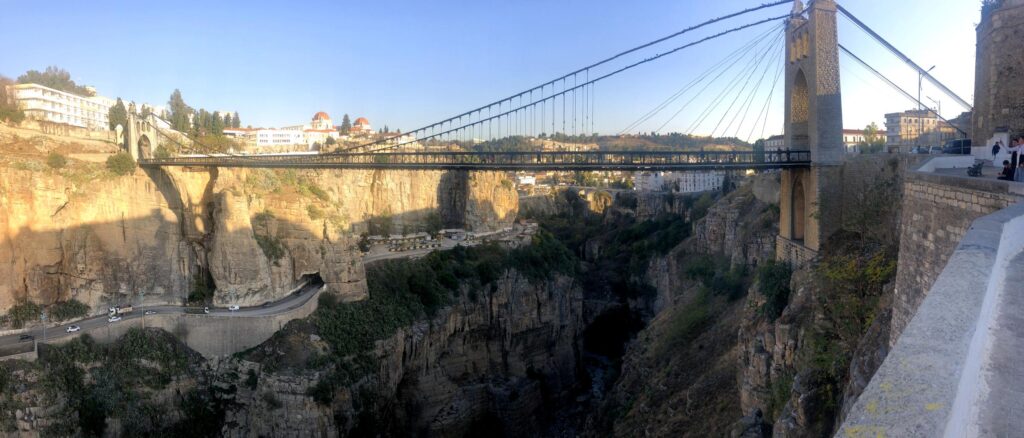
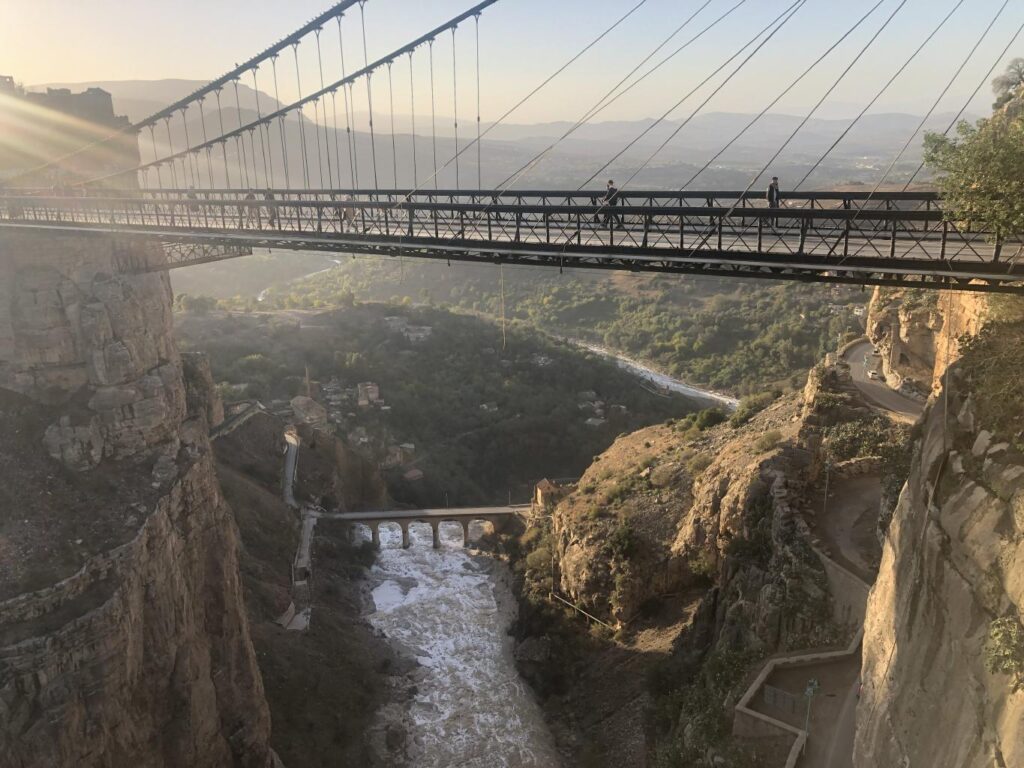
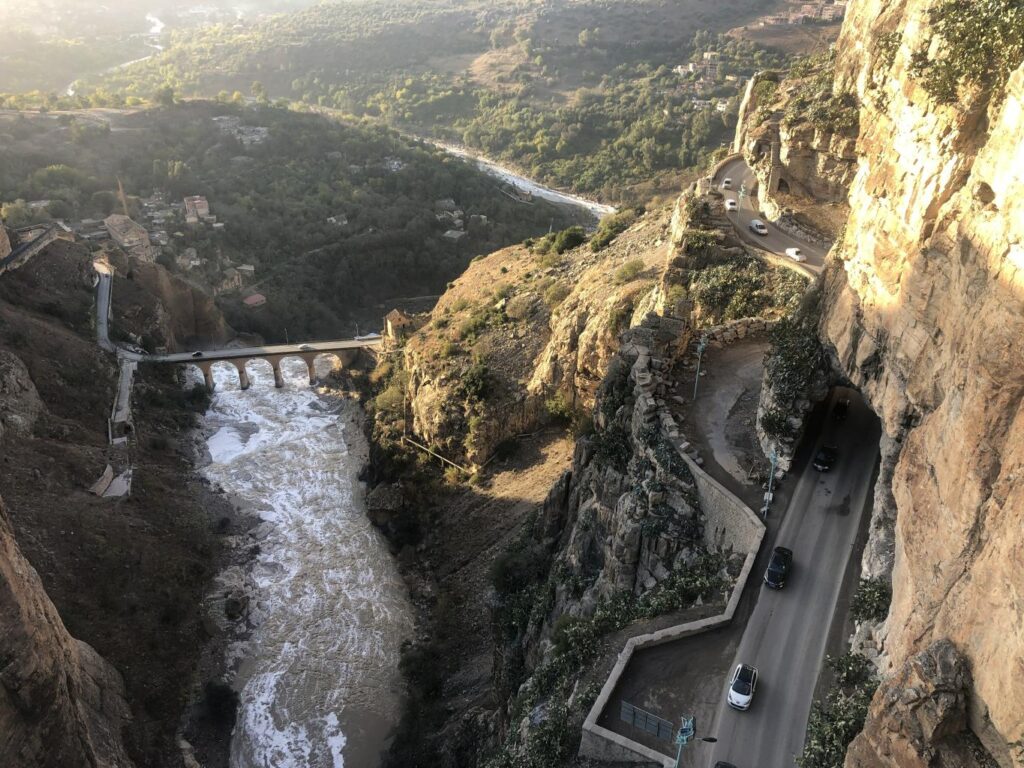
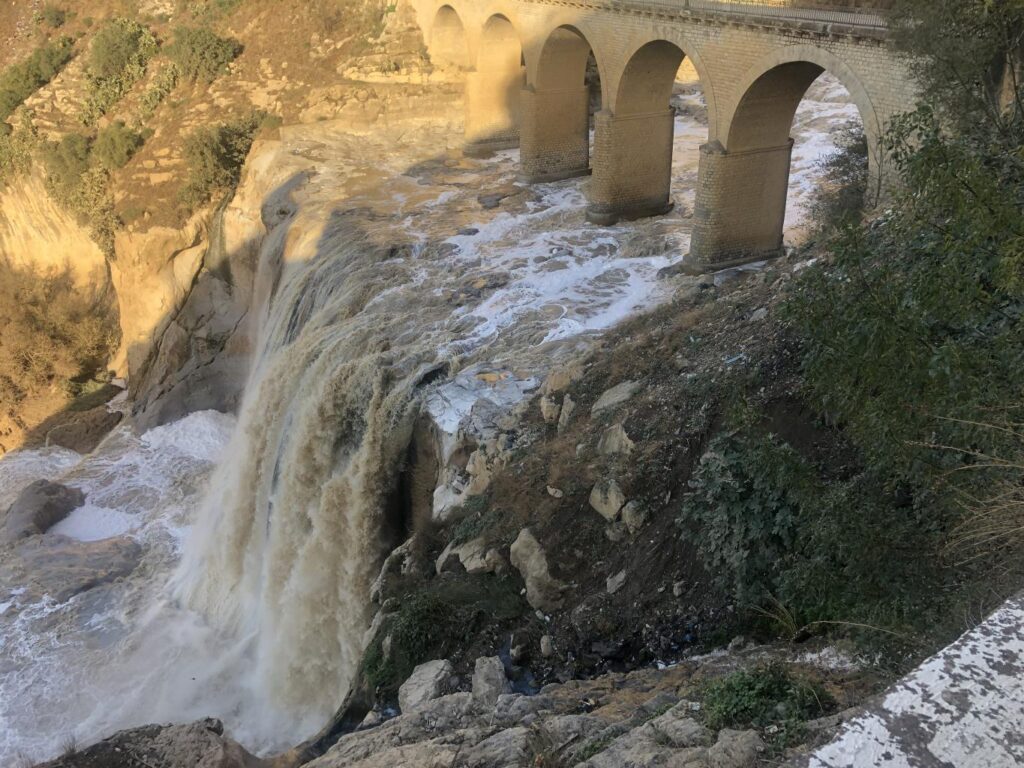
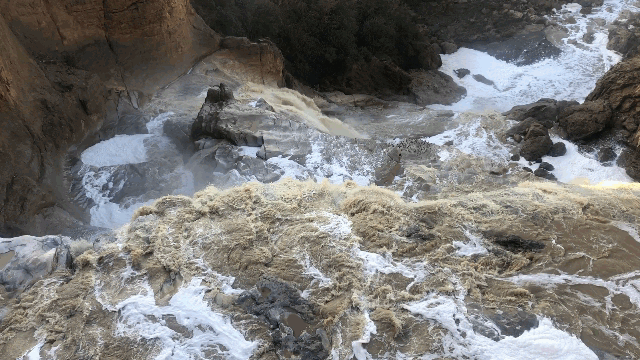
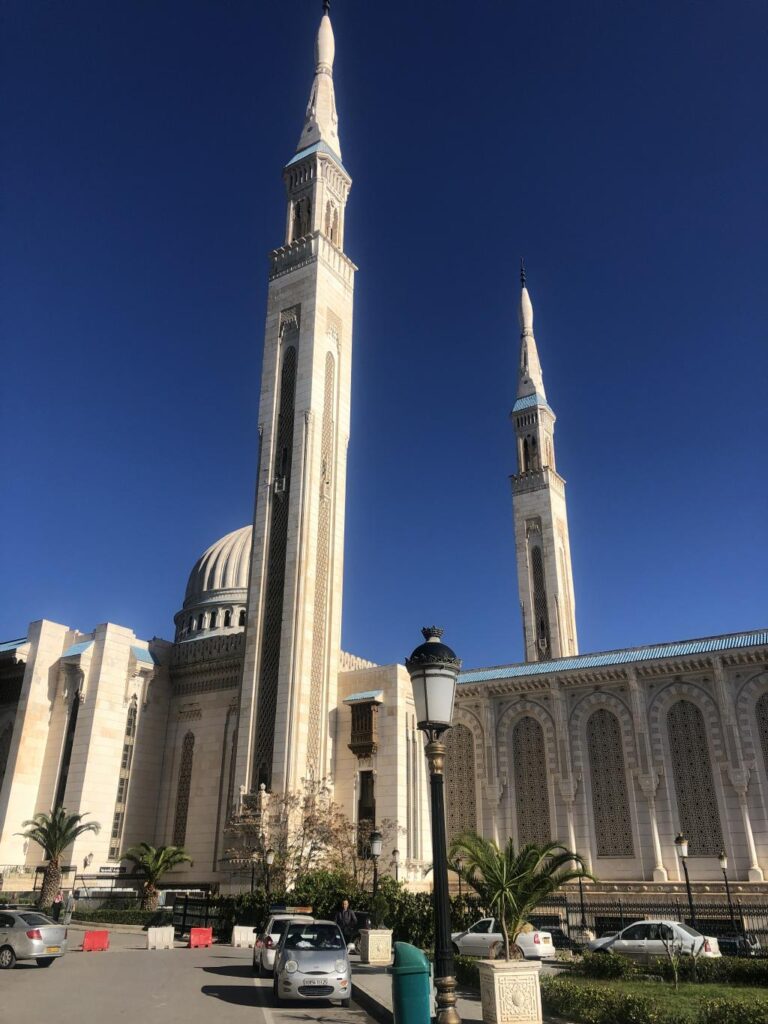
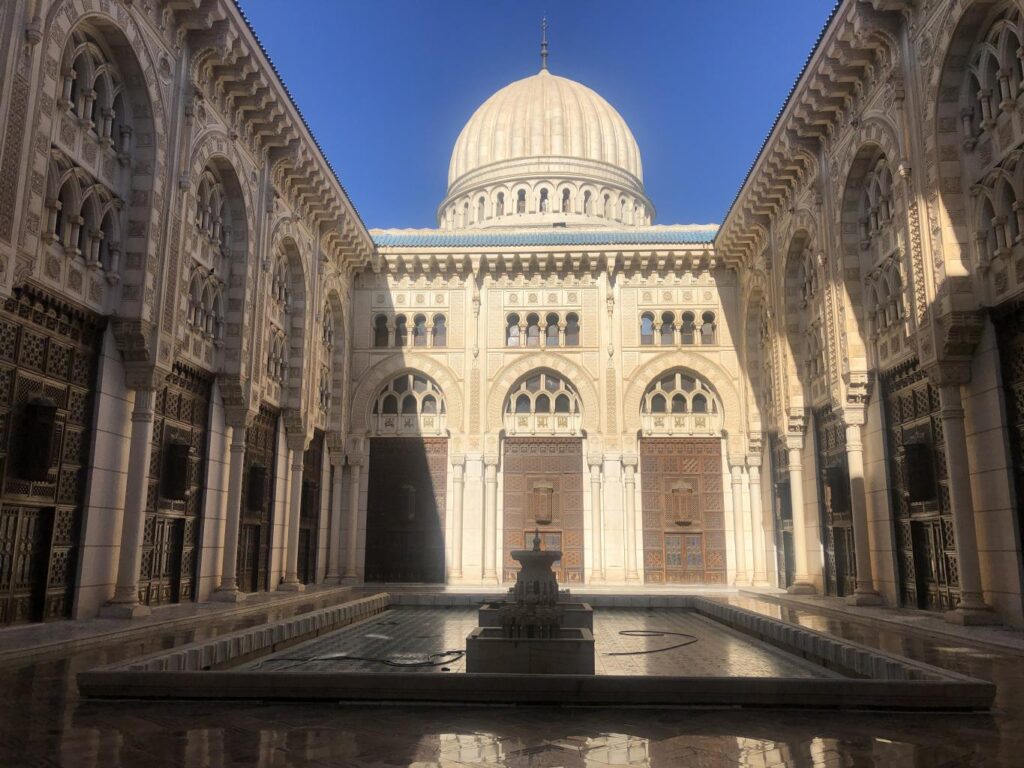
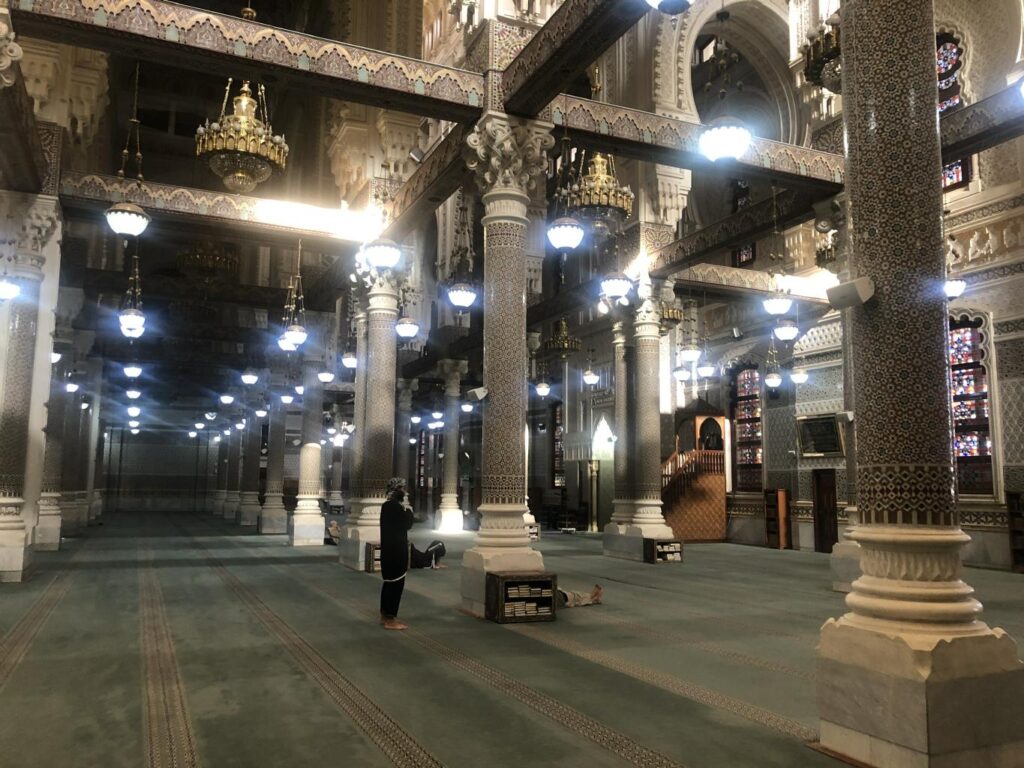
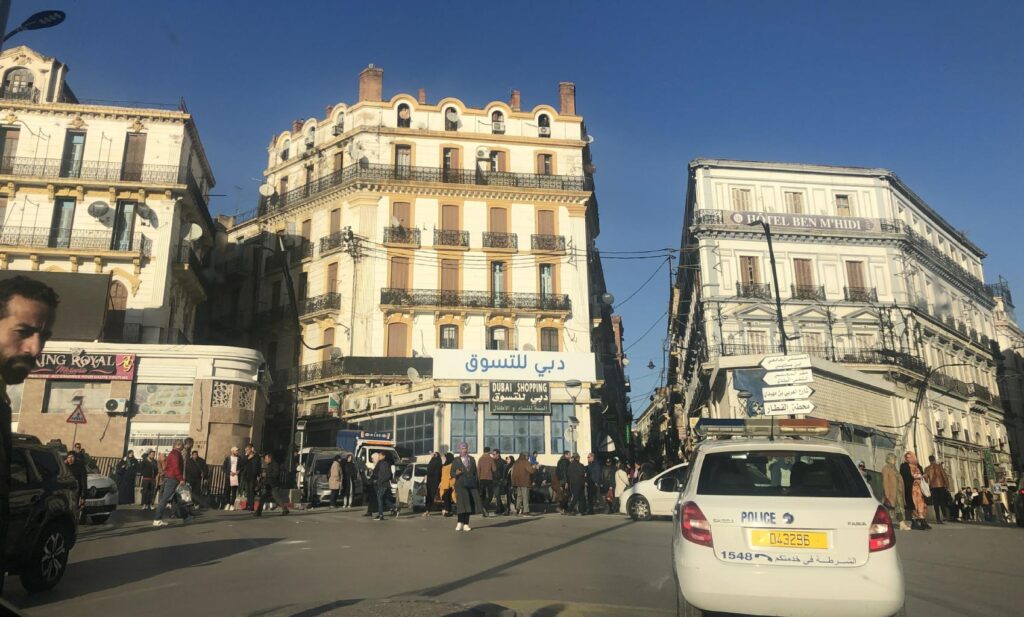
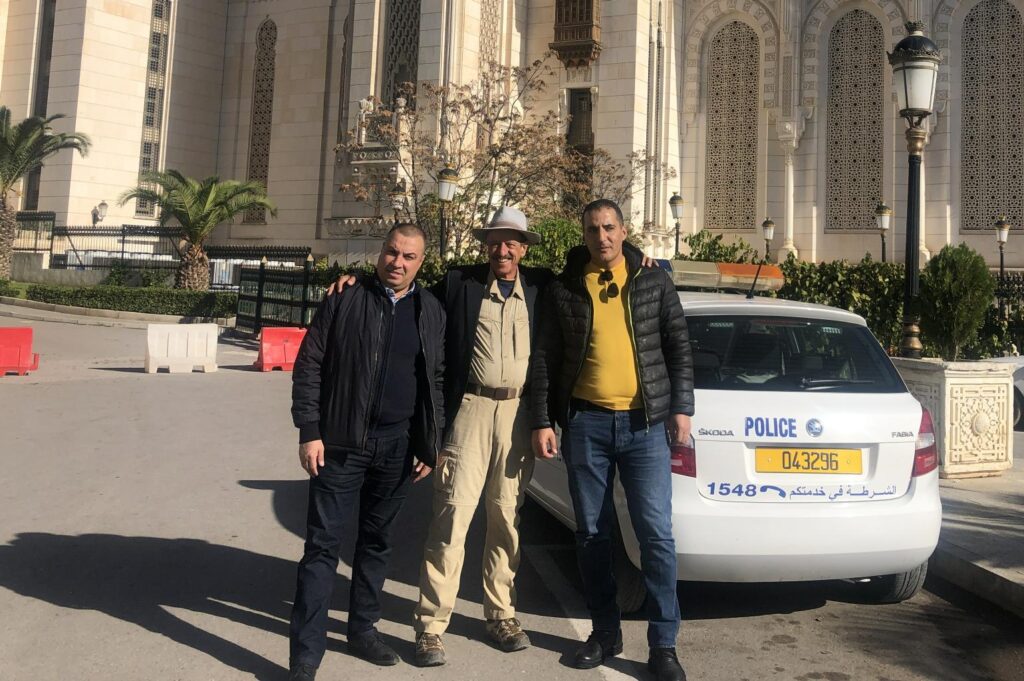
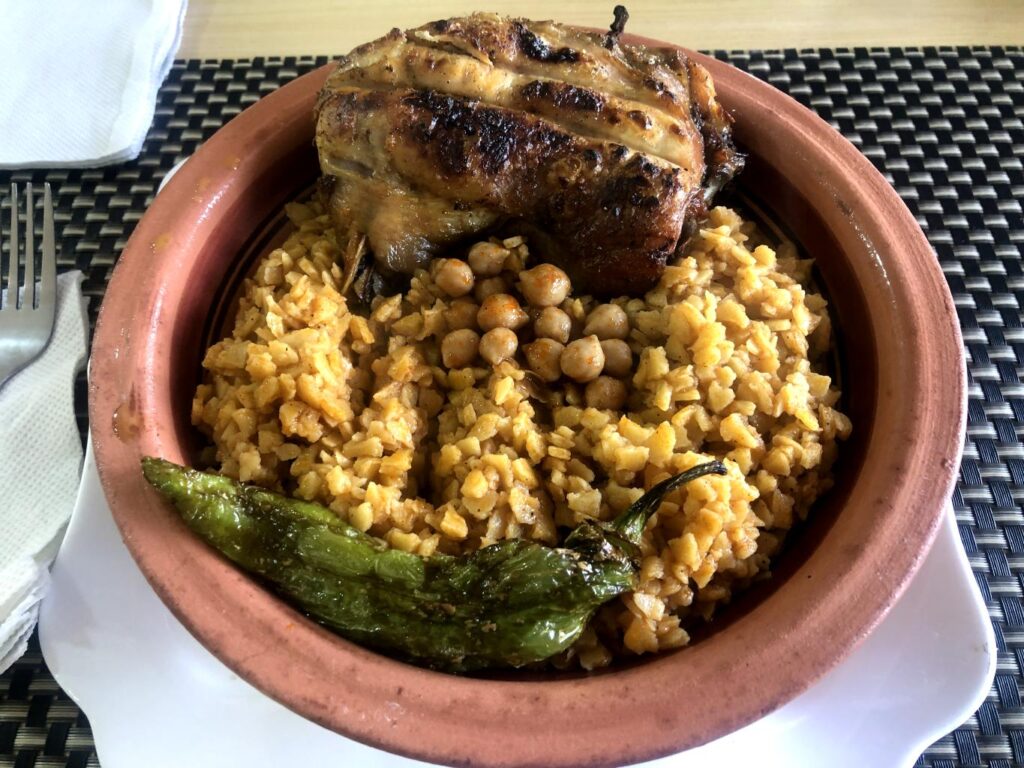
Two thousand years ago, north Africa was the breadbasket of the Roman Empire. Close to Italy, eastern Algeria was a convenient region for Rome to colonize. A short drive from Constantine are the ruins of two well-preserved Roman cities. Founded in the first century, Timgad had a population of 15,000 by the third century when it became a center of Christian activity. This city is noteworthy for being one of the best examples of the grid plan used in Roman town planning. What wowed me were the stunning mosaics carefully removed from the floors of the Roman city and preserved on the walls of Timgad’s museum. These are some of the most beautiful and intricate mosaics I’ve ever seen.
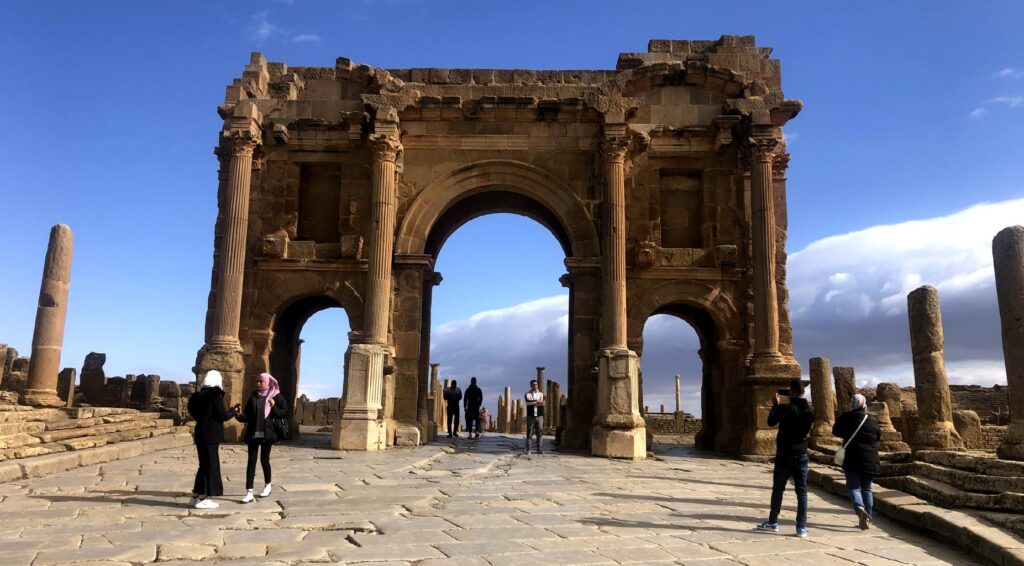
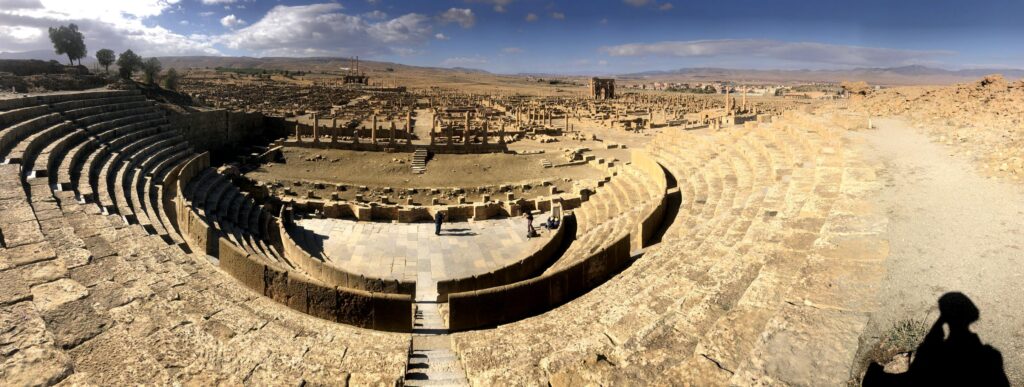
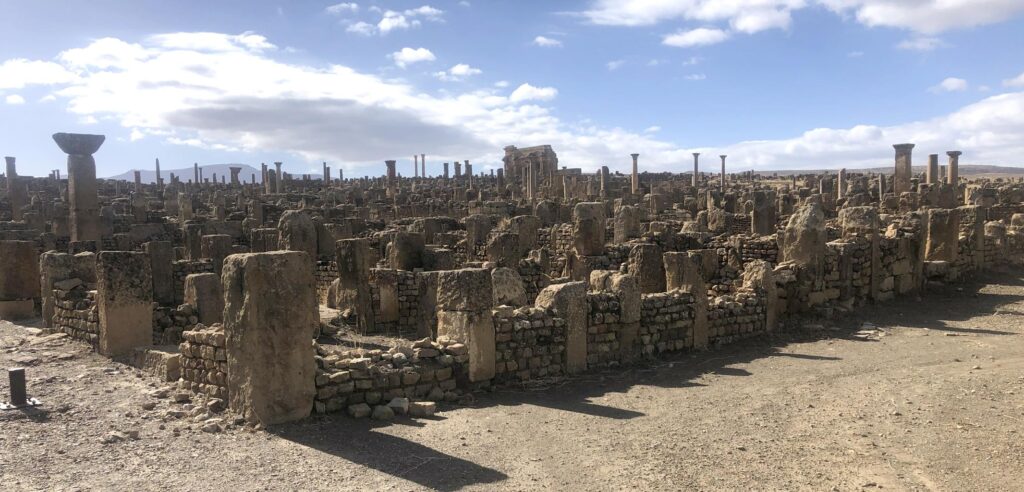
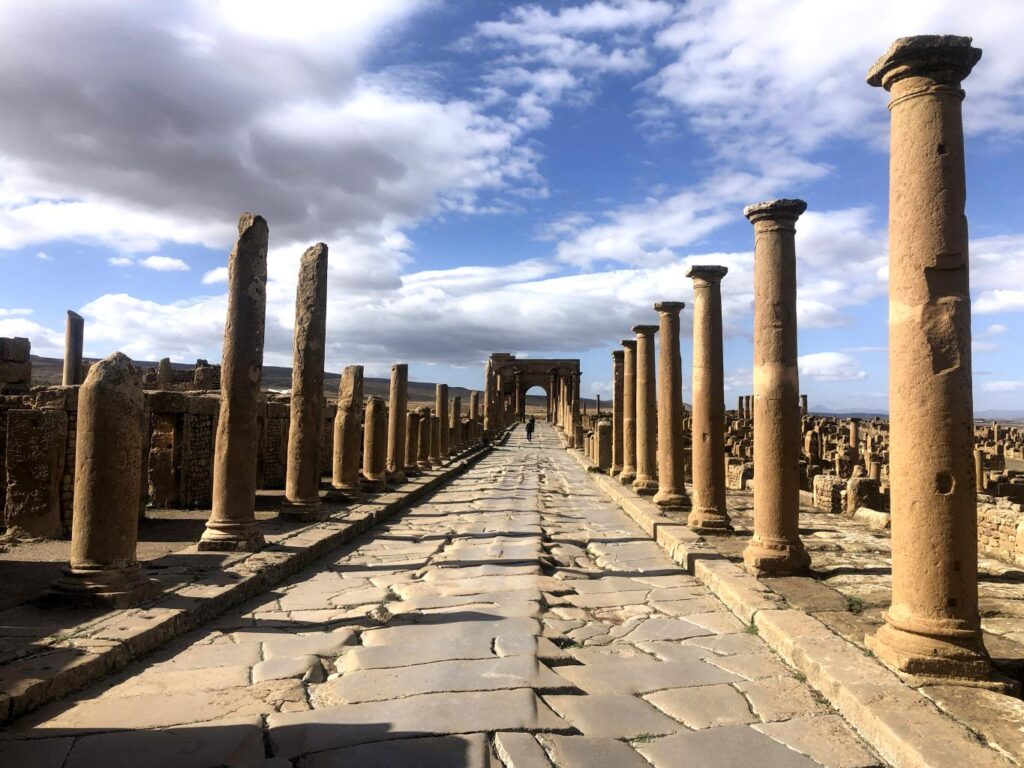
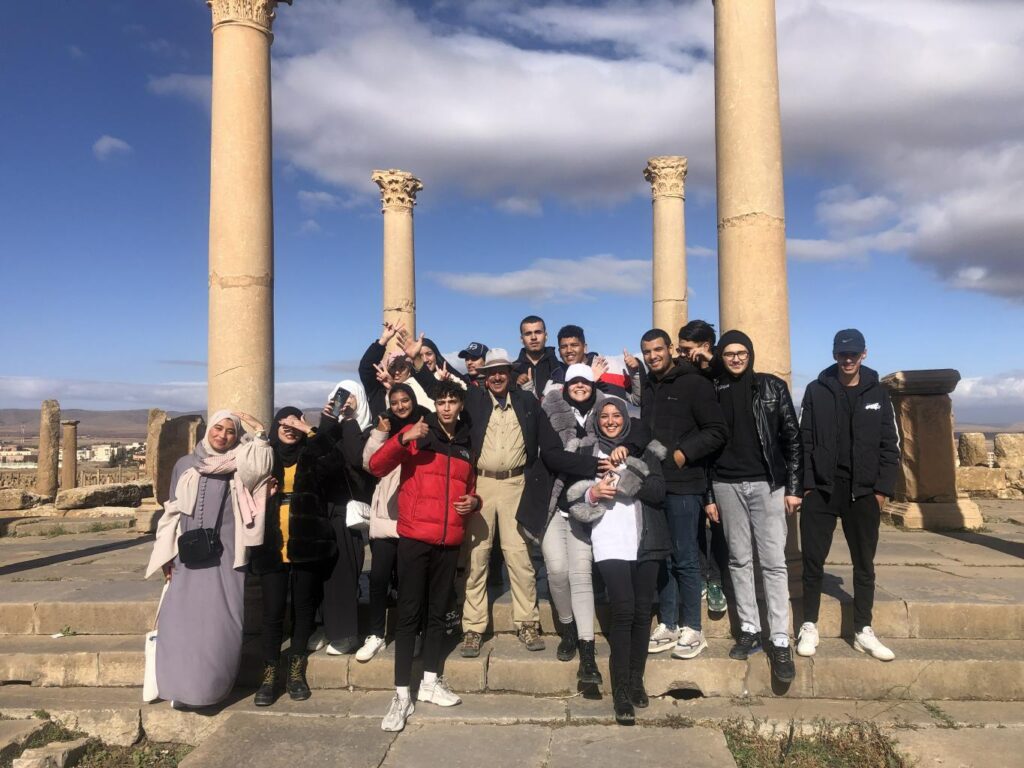
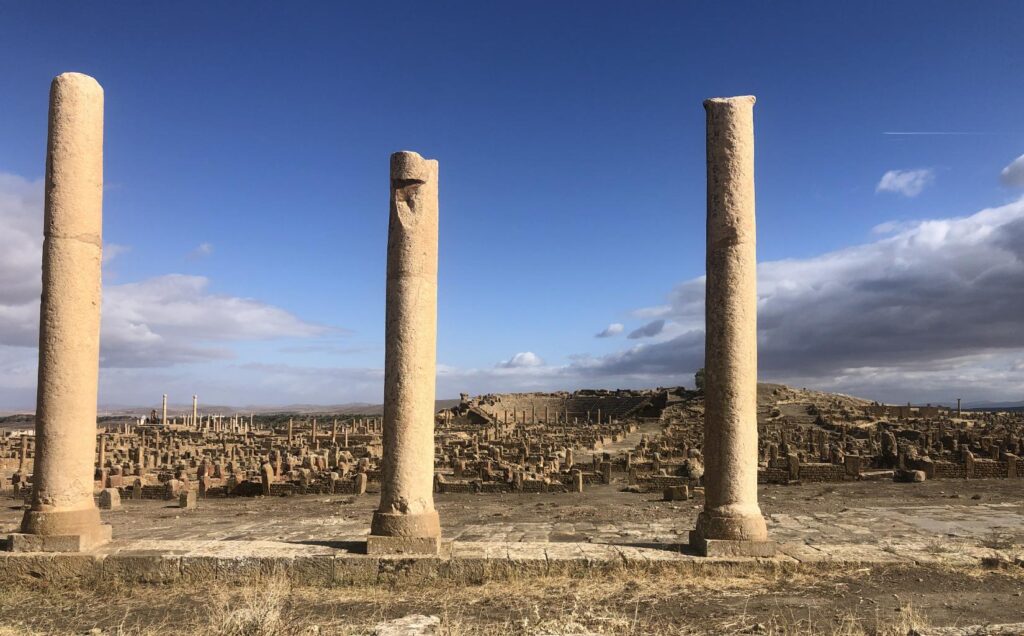
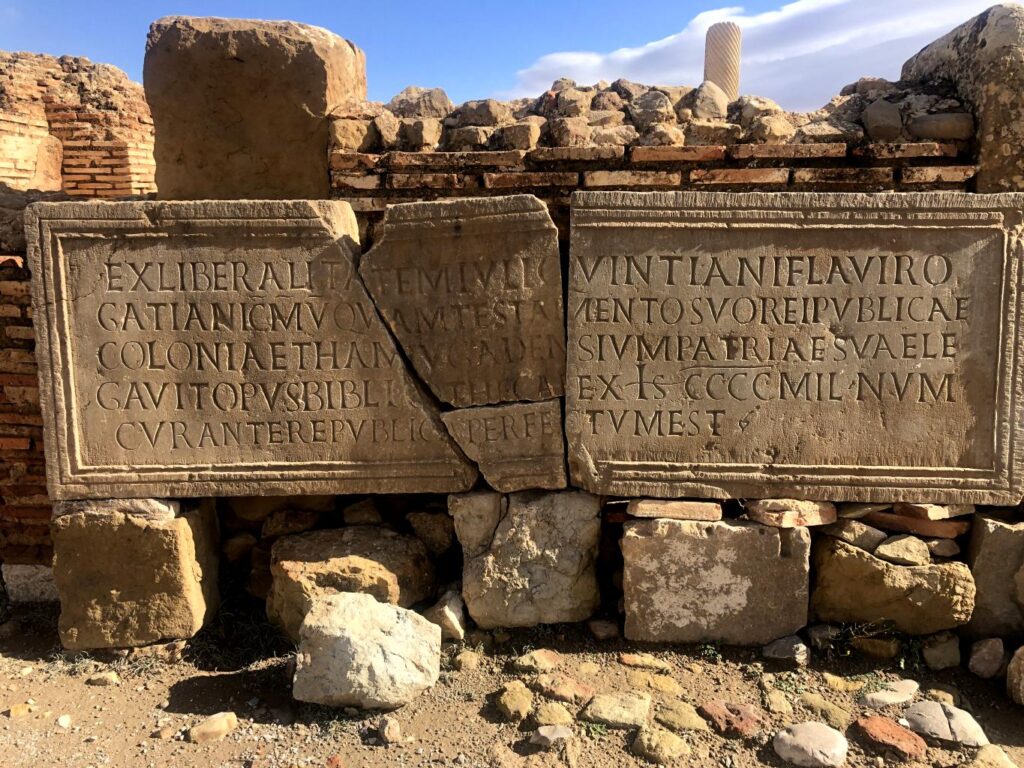



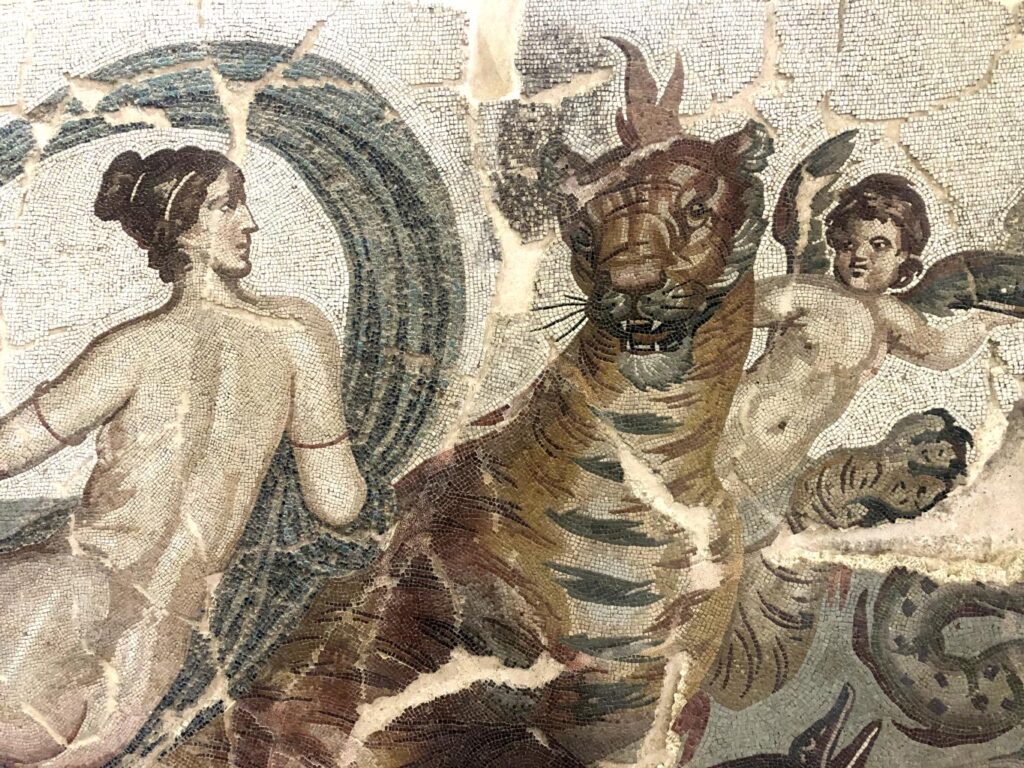
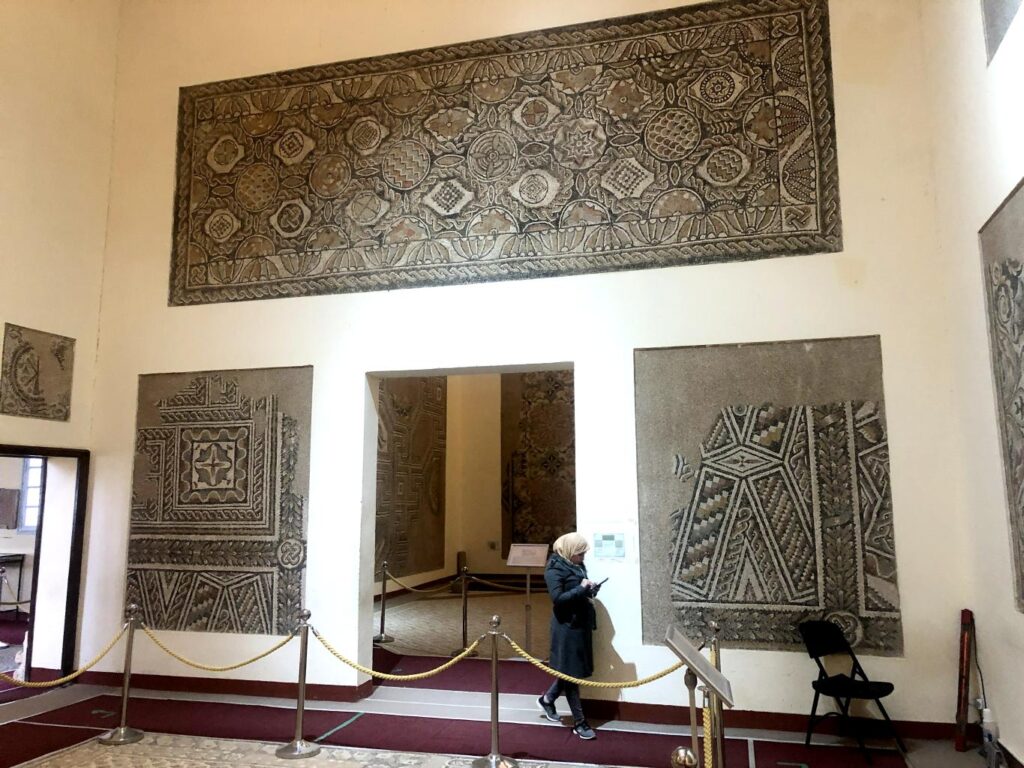

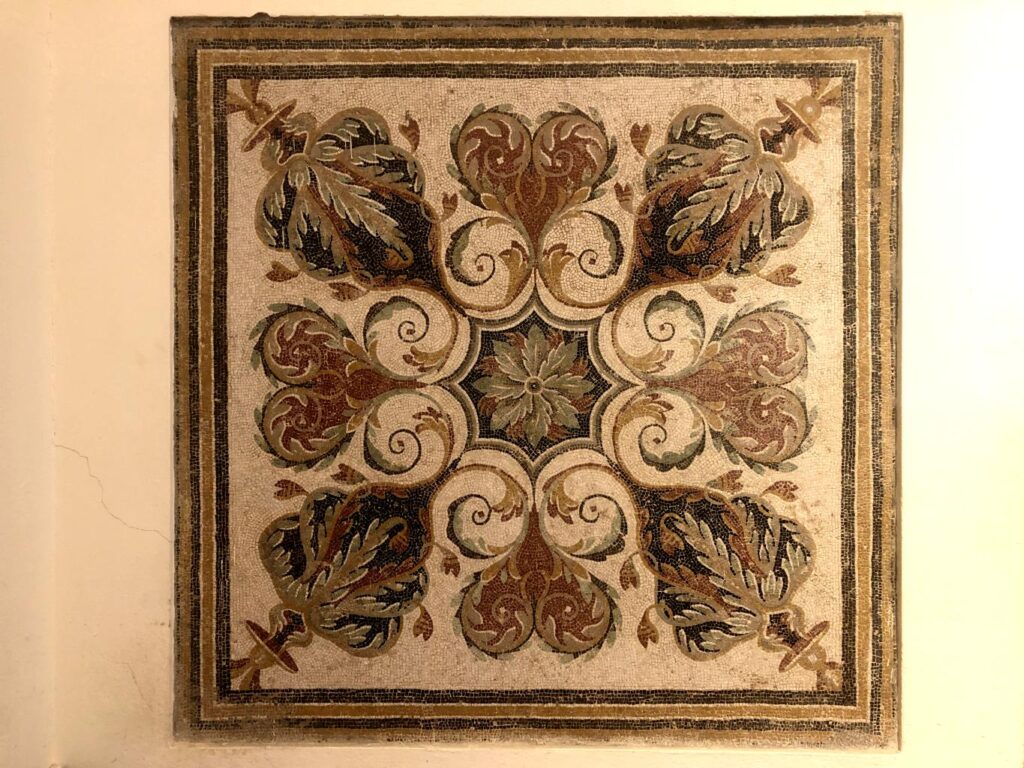

West of Constantine are the ruins of Djémila. Nine hundred meters above sea level and nestled into forested mountains, this city was originally built as a military garrison. Over time, it became a trading market with a population of 10,000. When Christianity came here, a basilica and a baptistry were built. As in Timgad, the mosaics that covered the floors of the buildings, markets and temples have been beautifully preserved in a nearby museum.


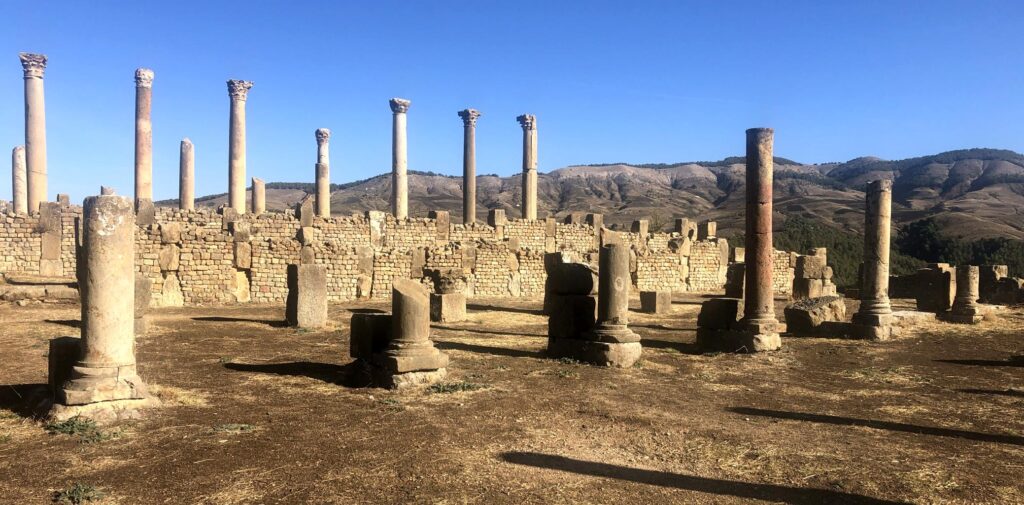
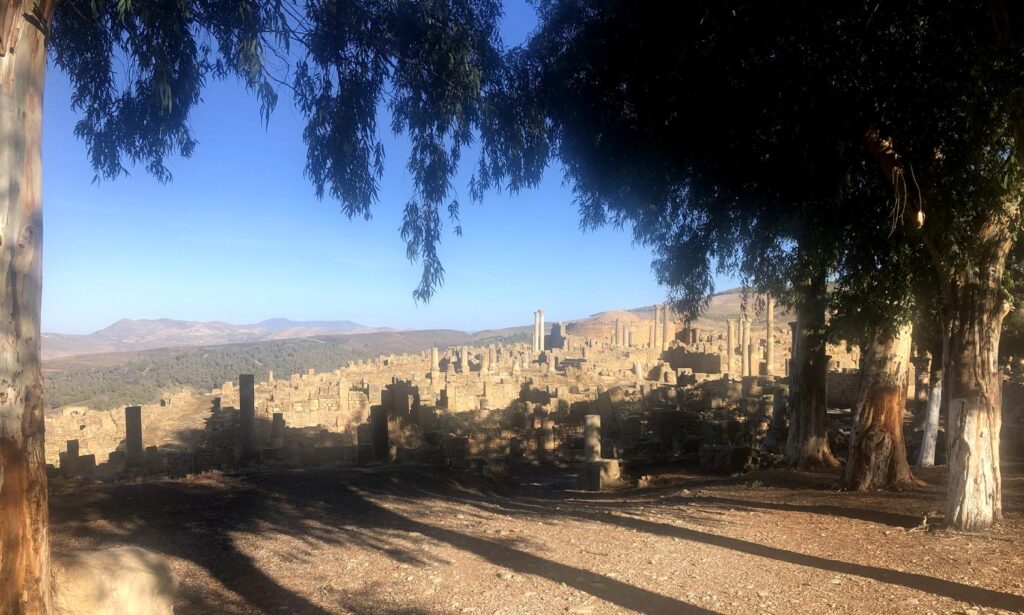
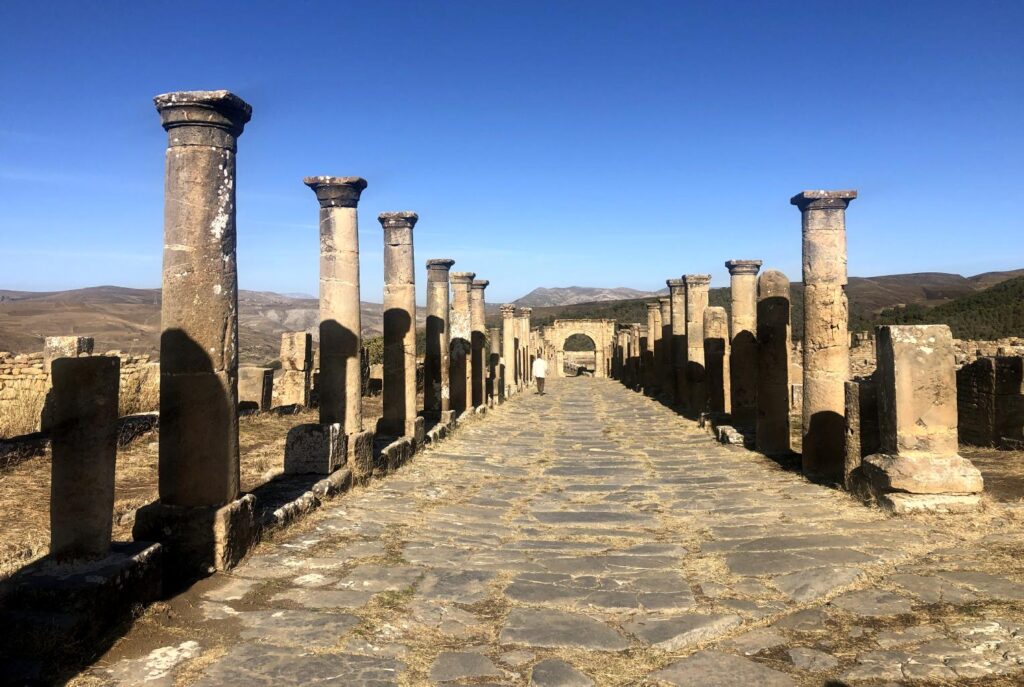
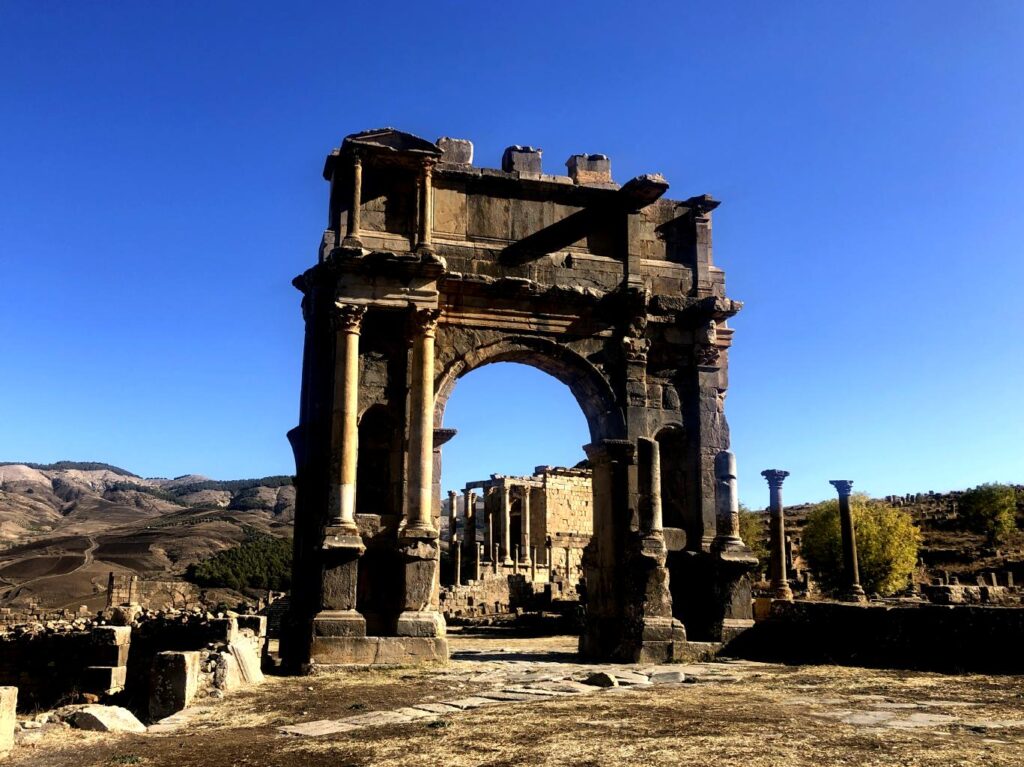
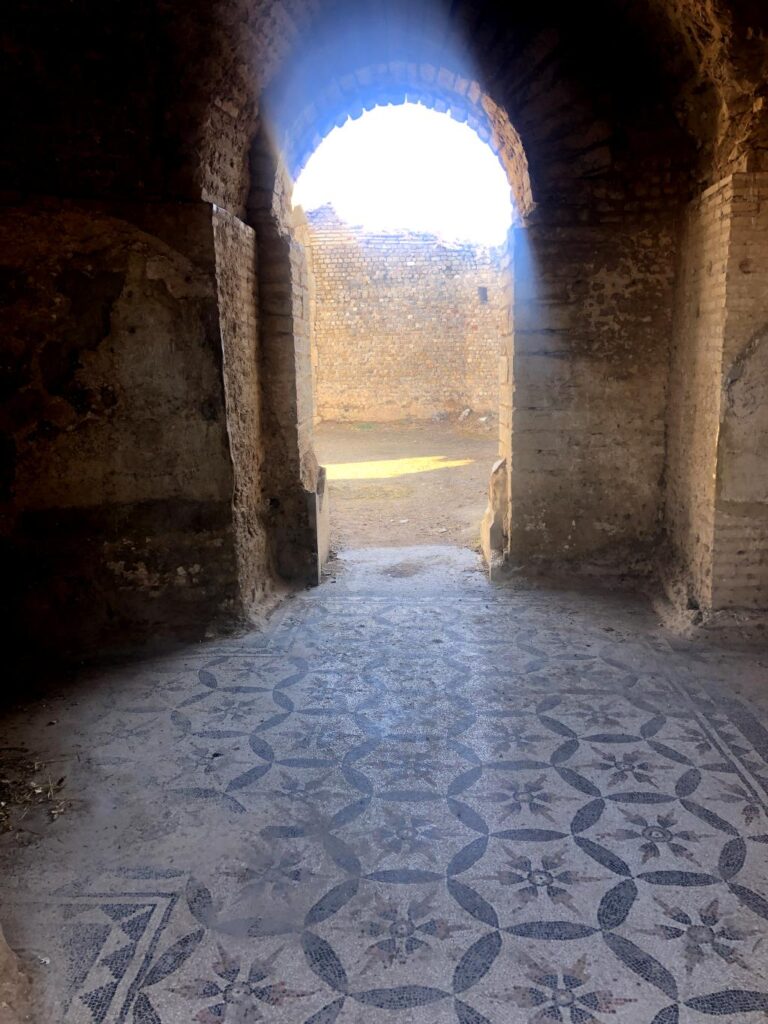
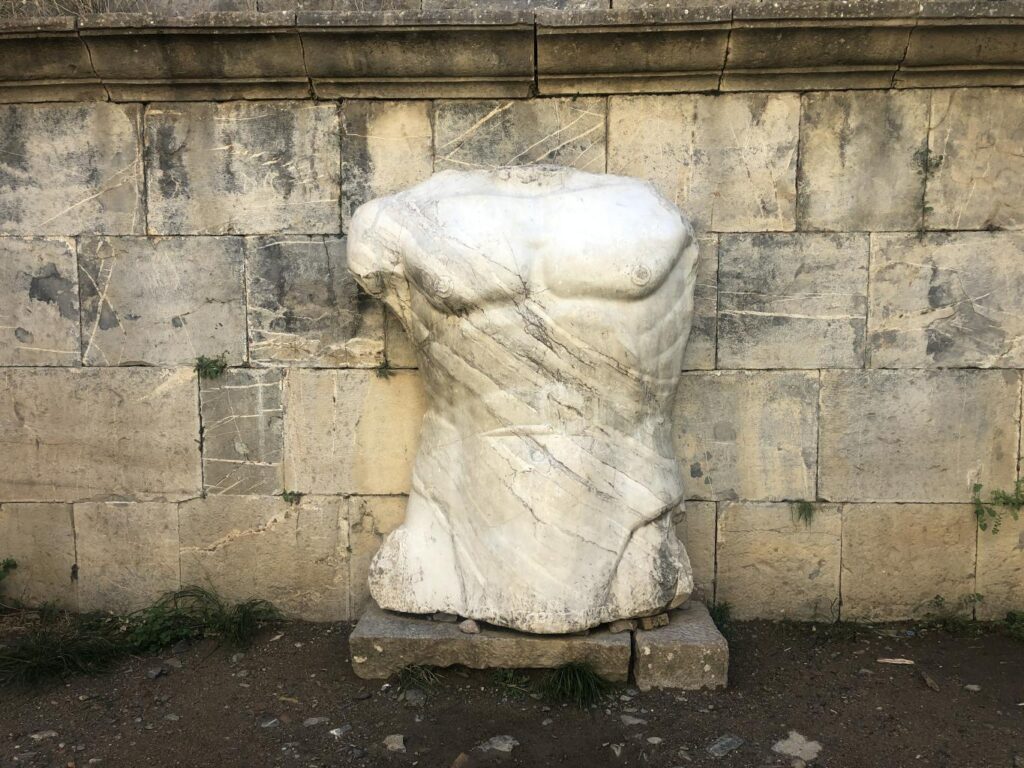
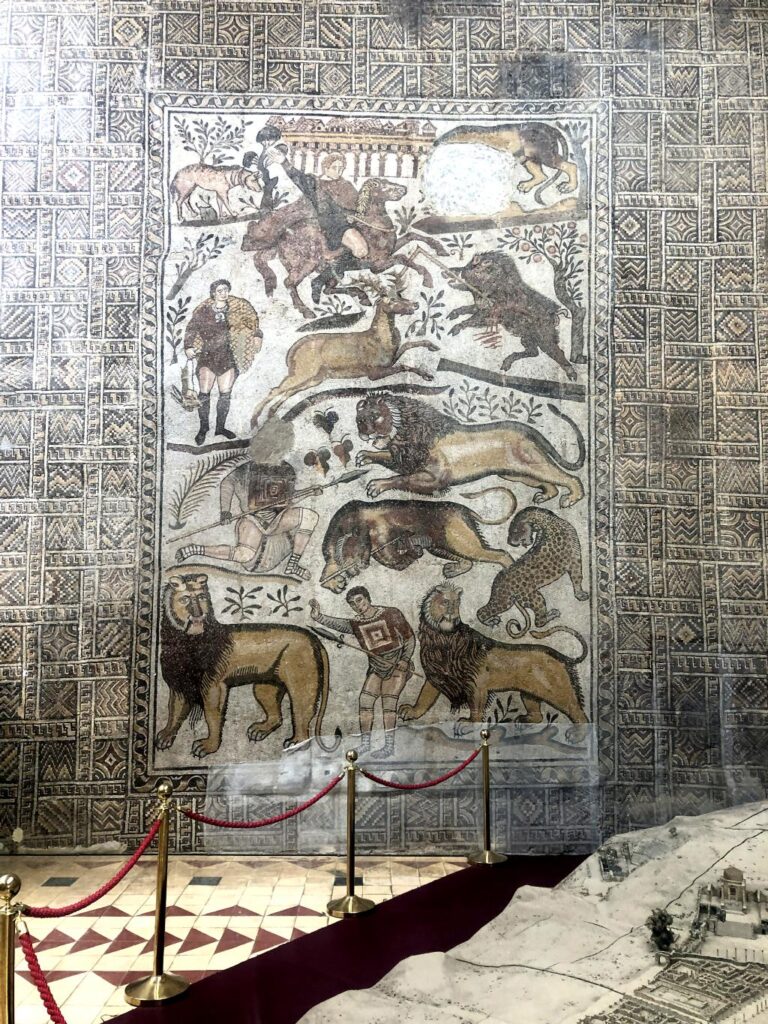
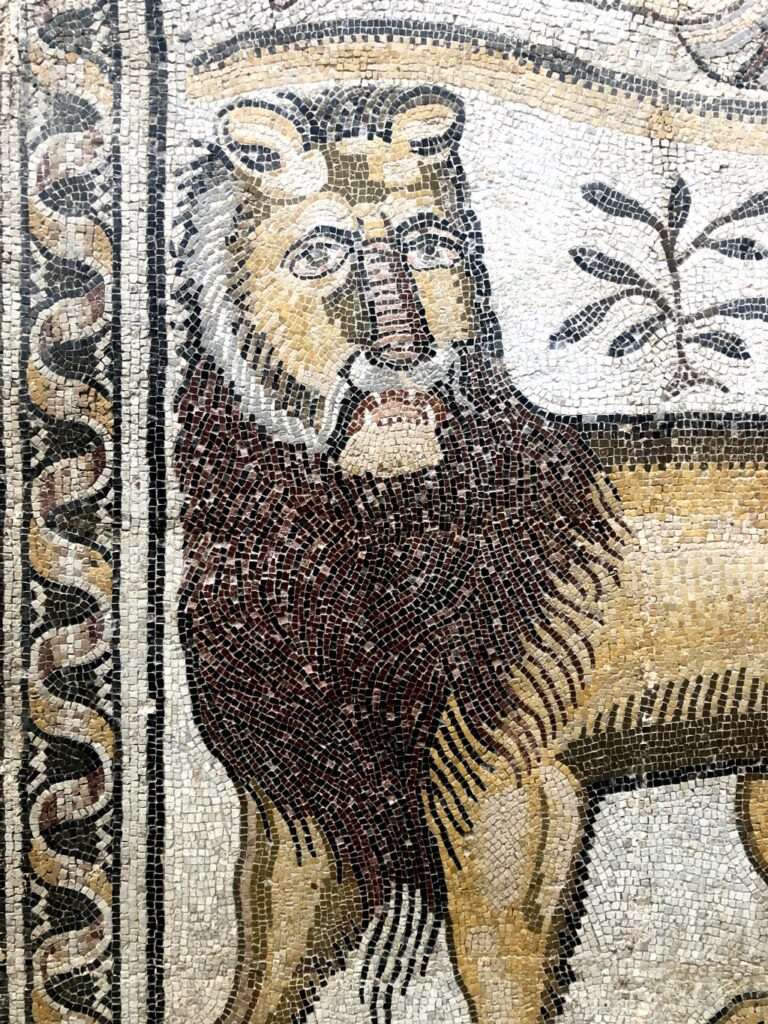
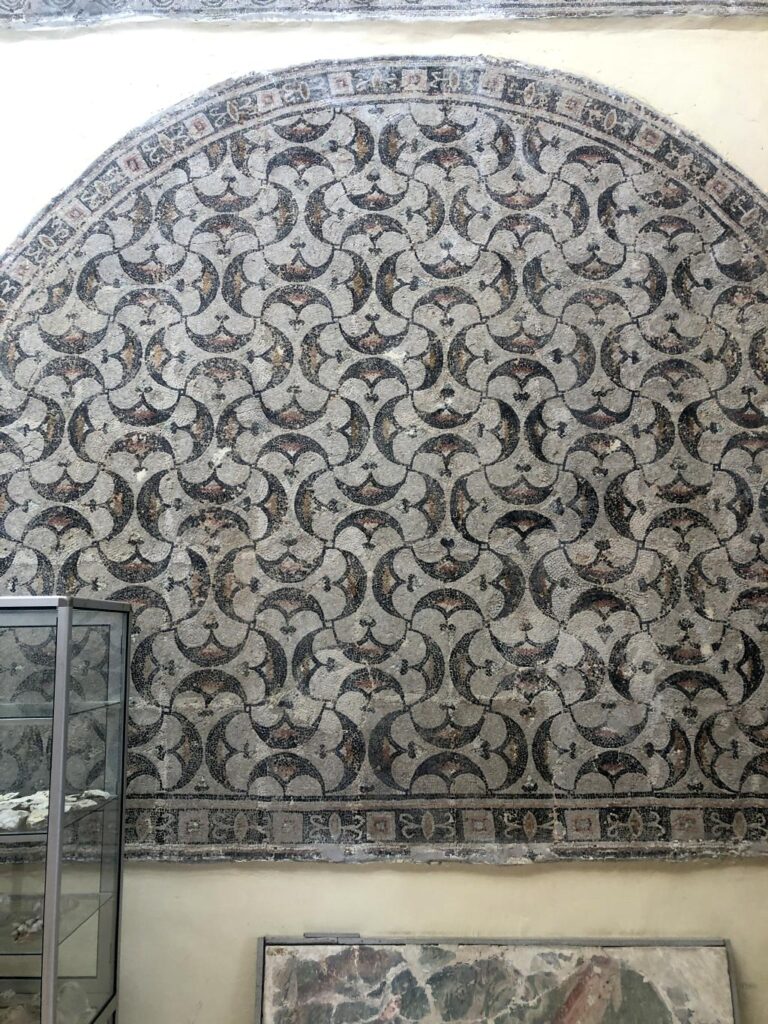
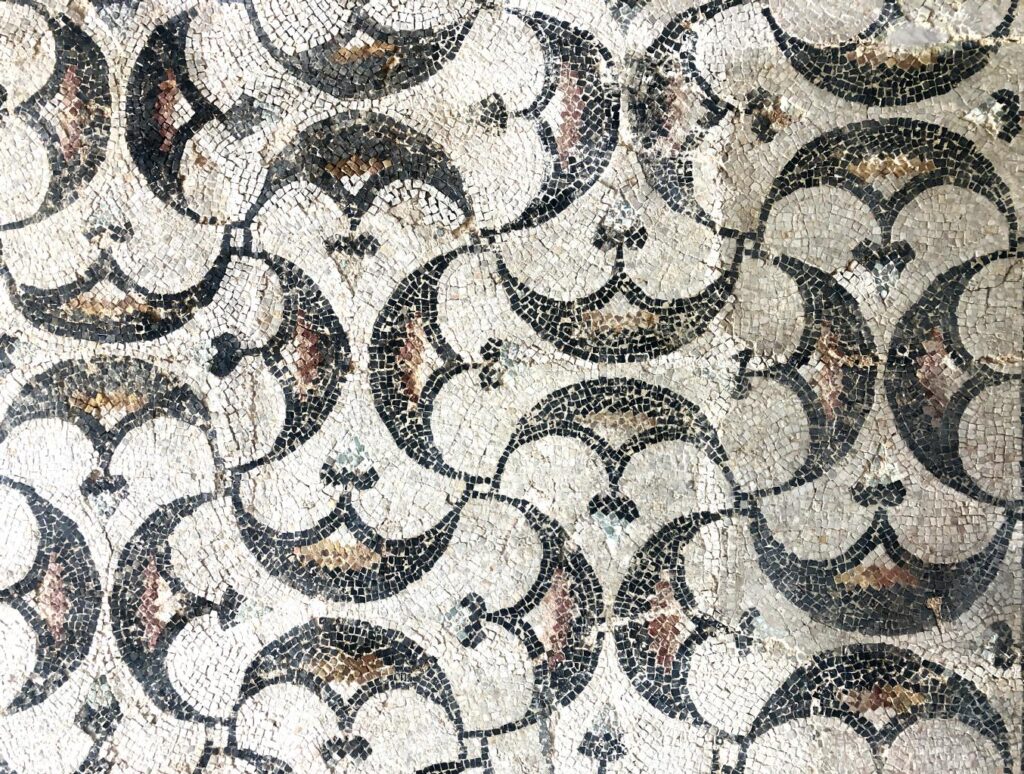
From Constantine, I flew to Oran in western Algeria. Note: Air Algérie is a reliable, inexpensive, government-owned airline. Although trains link Algeria’s northern cities, flying around Algeria with Air Algérie saved me many hours of travel time.
Oran is Algeria’s second largest city. It sits on a plateau overlooking the sea. Below the city is a harbor busy with oil tankers, cargo ships and fishing boats. Towering above the port is a mountain topped by Fort Santa Cruz, built by Spain in 1563 and later occupied by France. In Oran, I spent two days ambling through the neighborhoods, eating fish and Créponné (a lemon sorbet invented here), practicing my French, and frequenting the markets, cafés and plazas described by Albert Camus in The Plague.
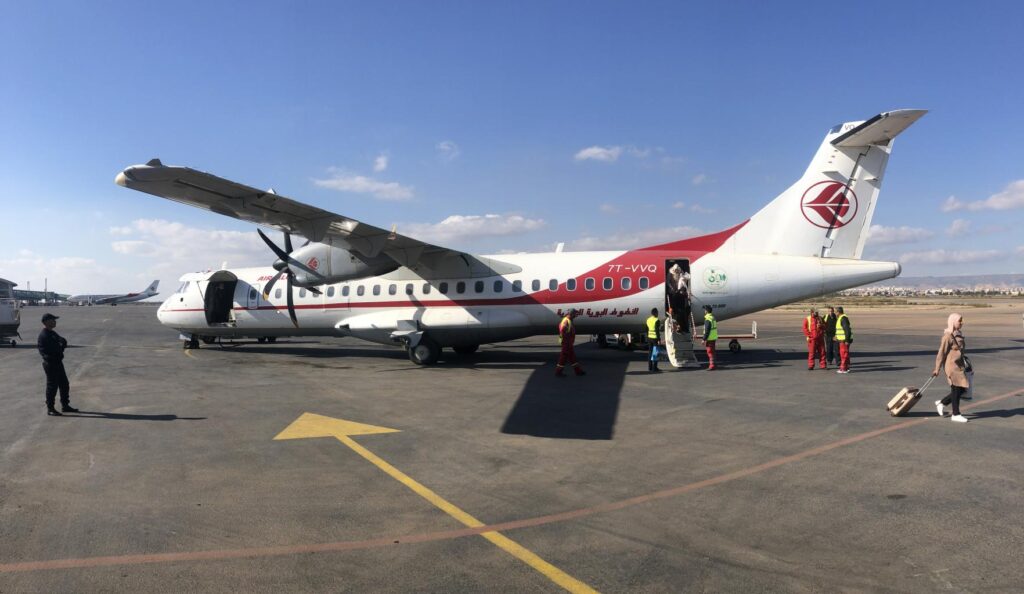

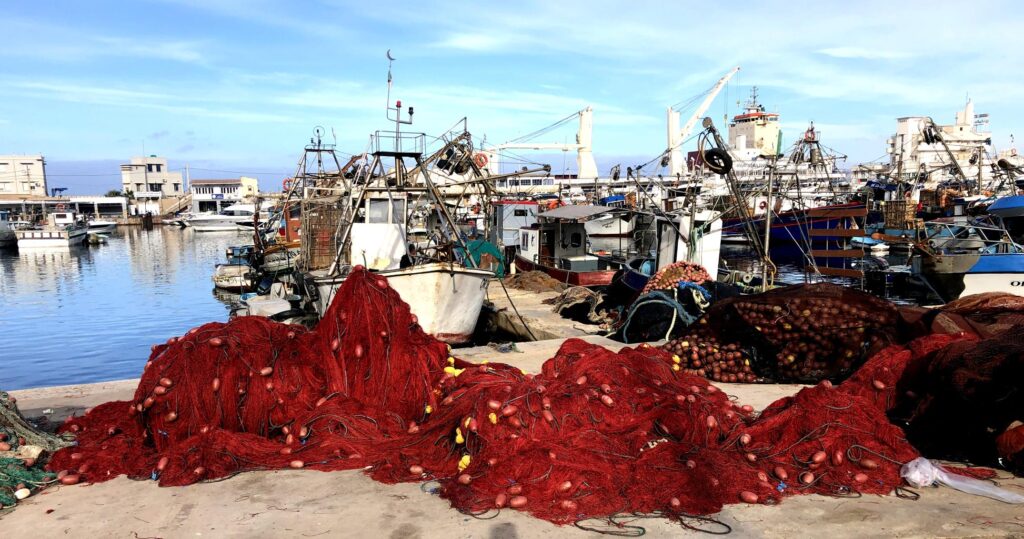
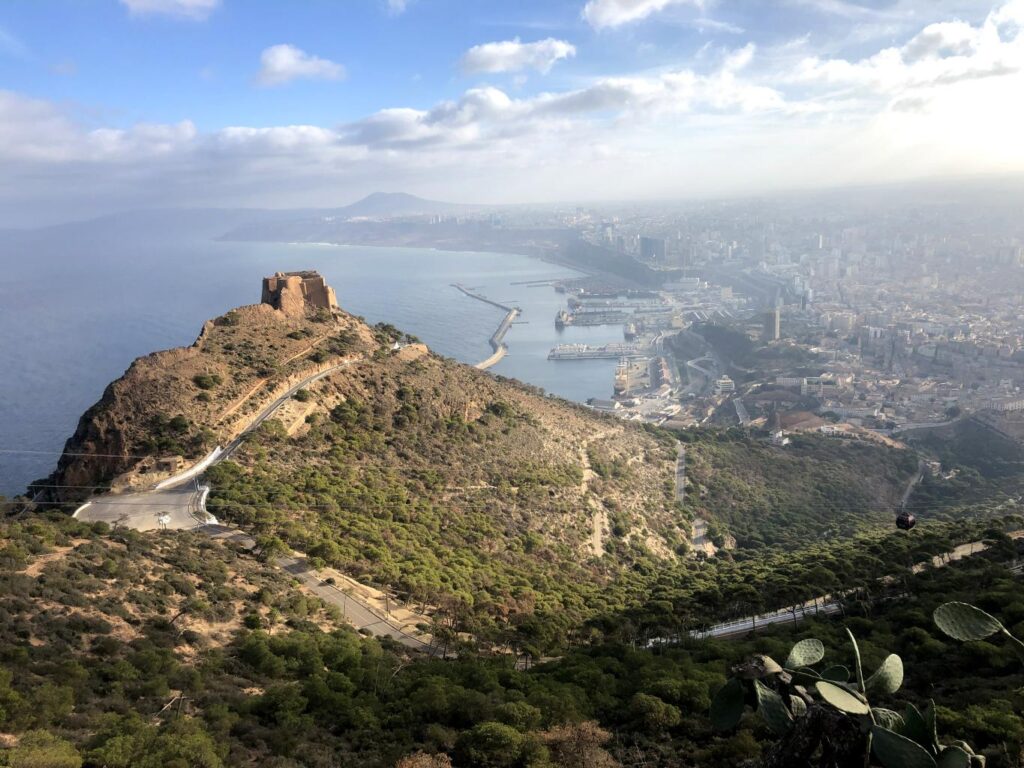
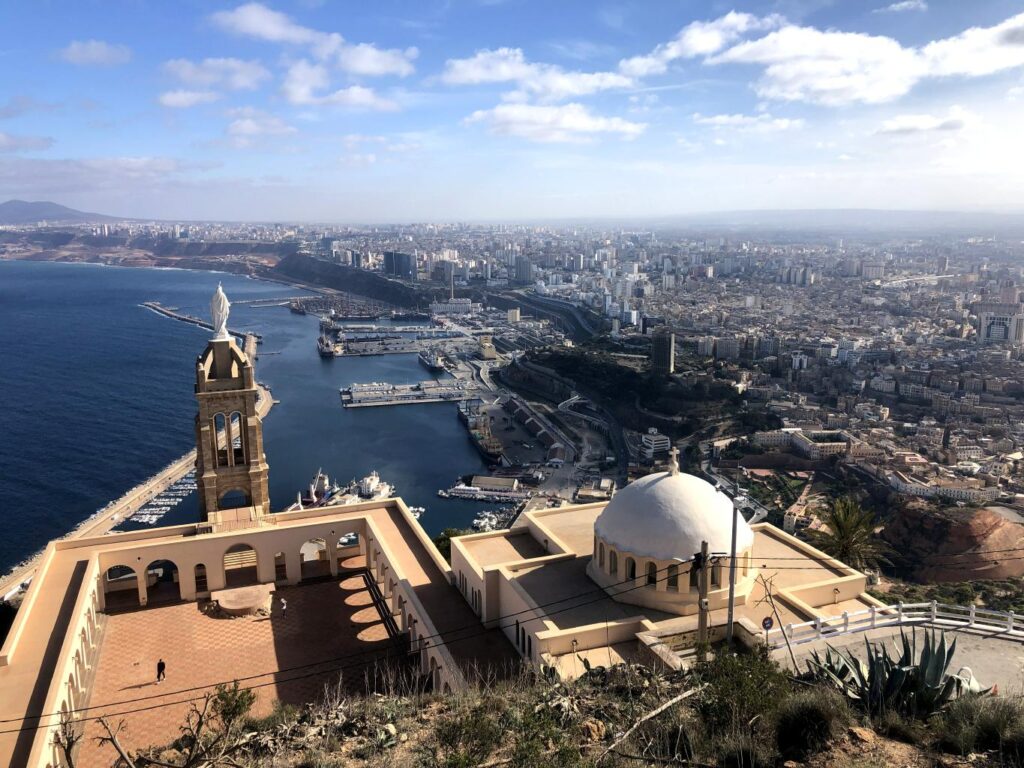
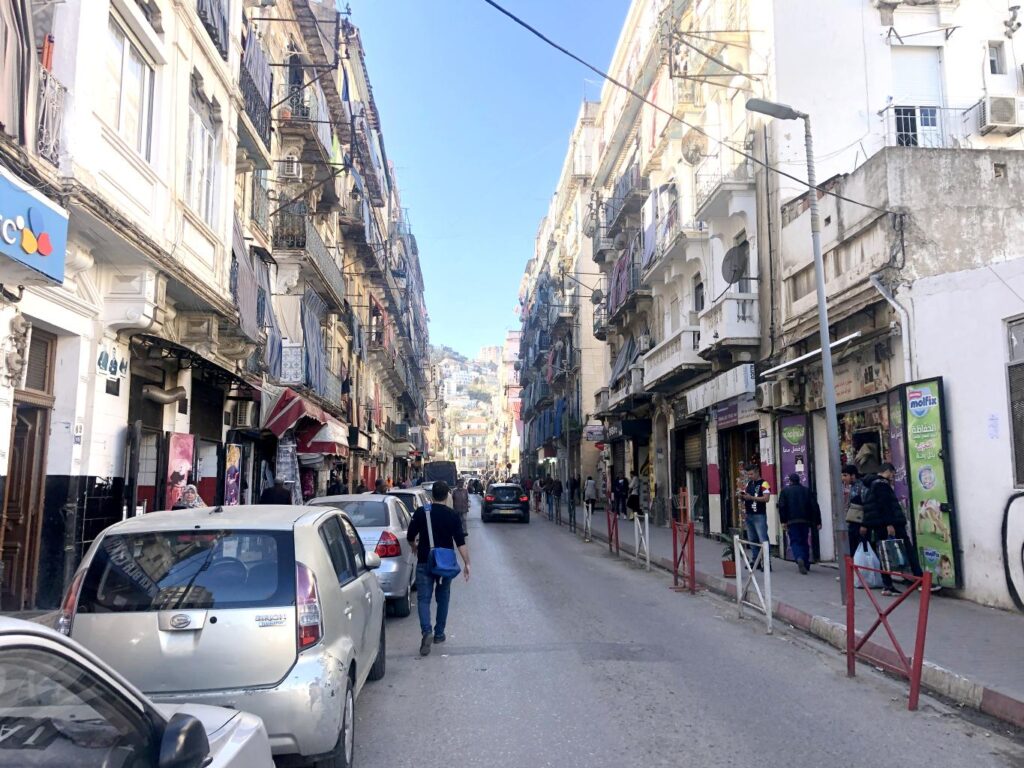
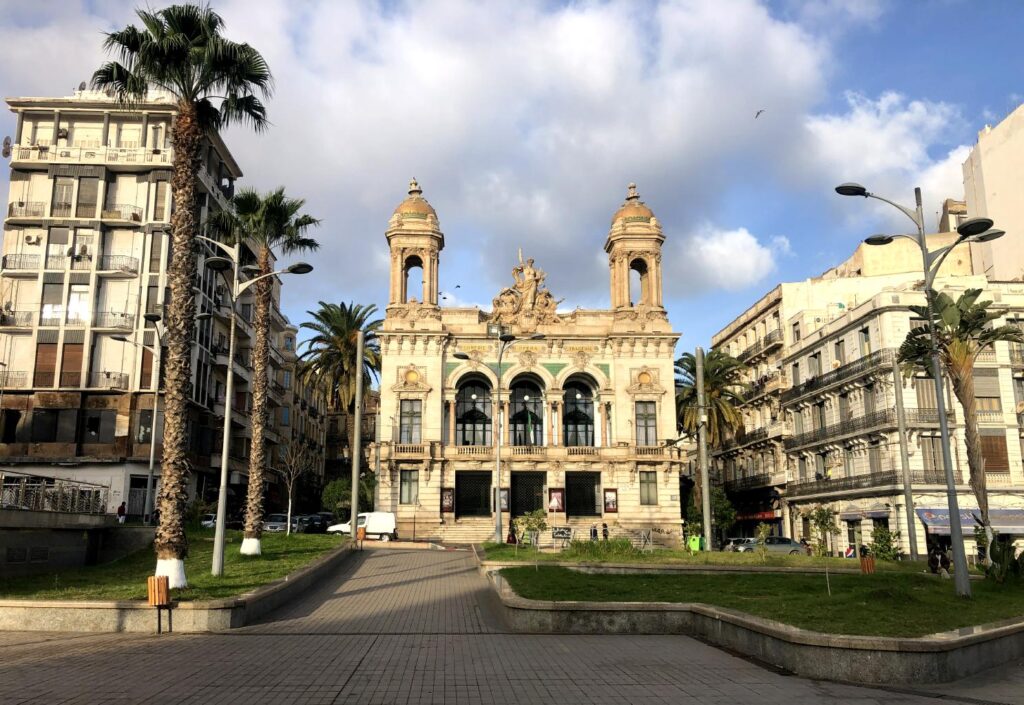
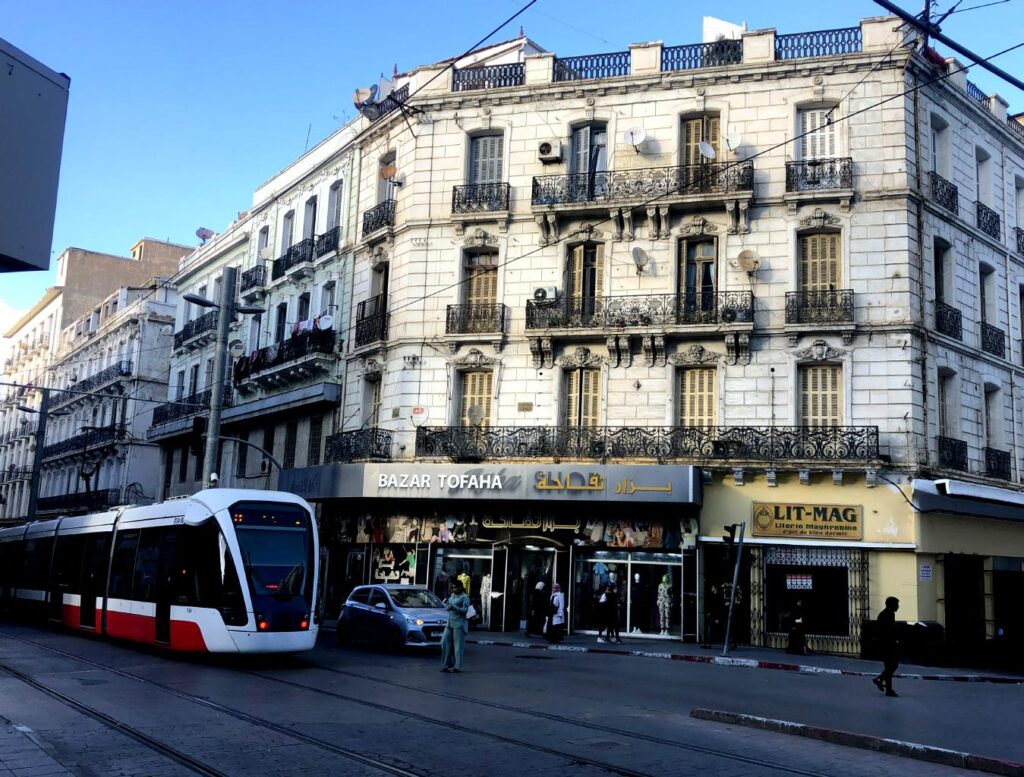

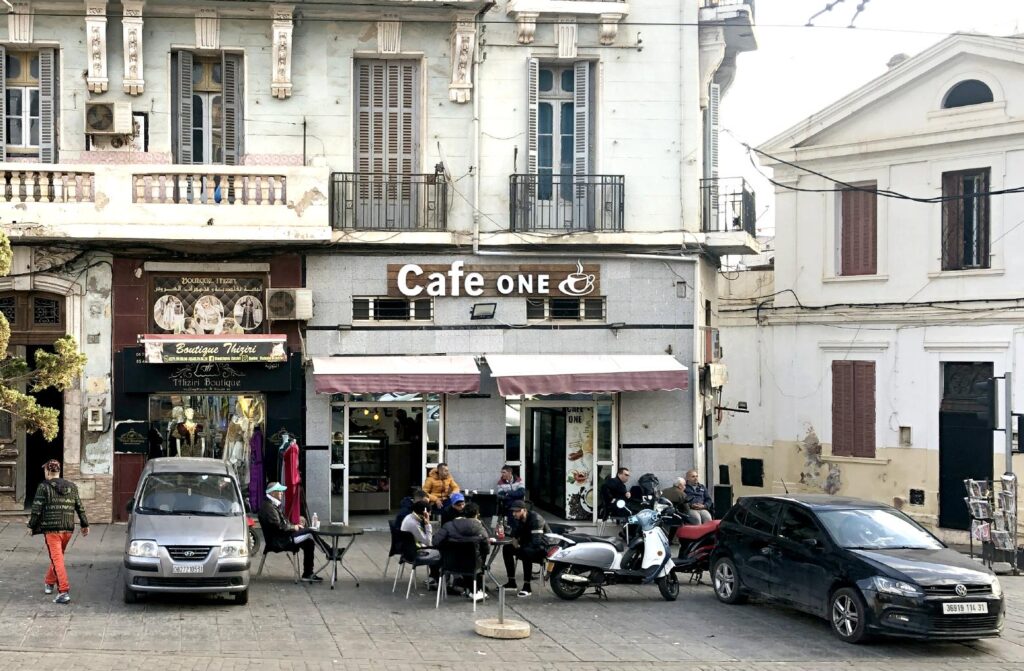
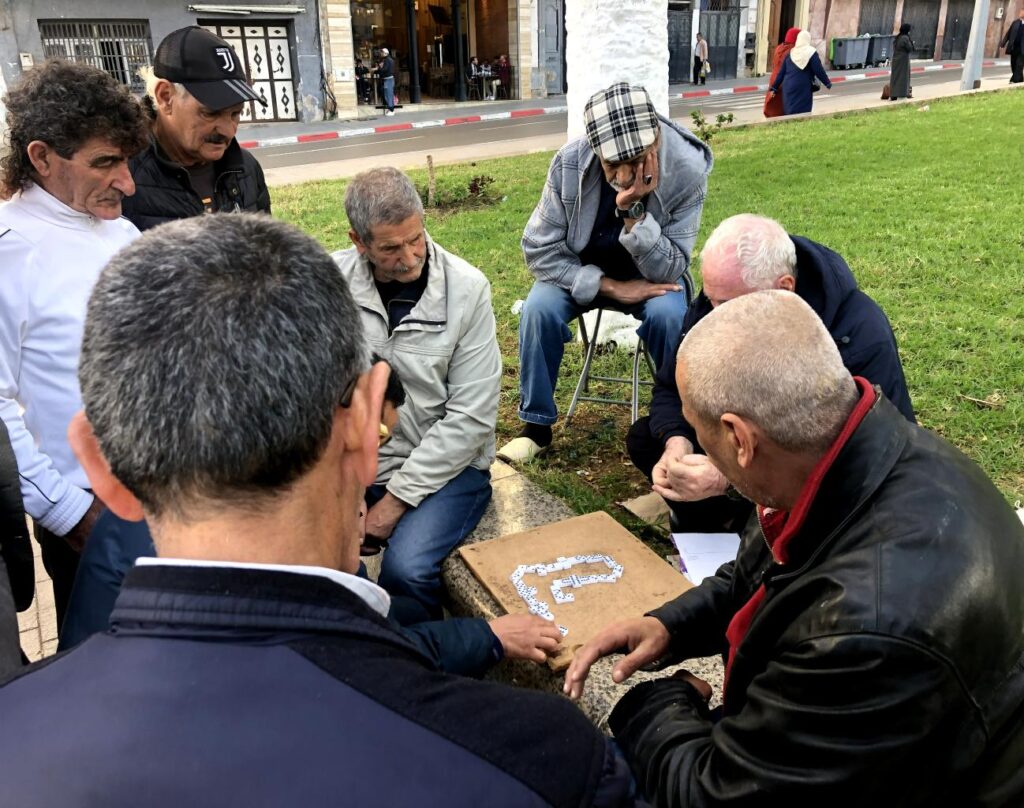
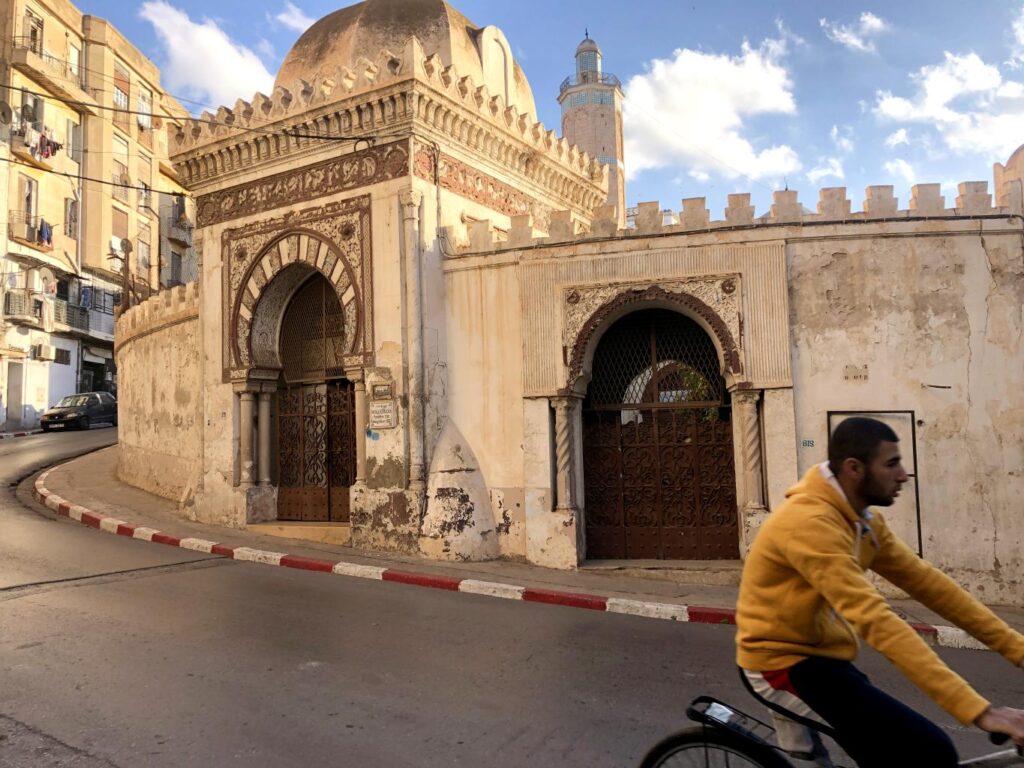
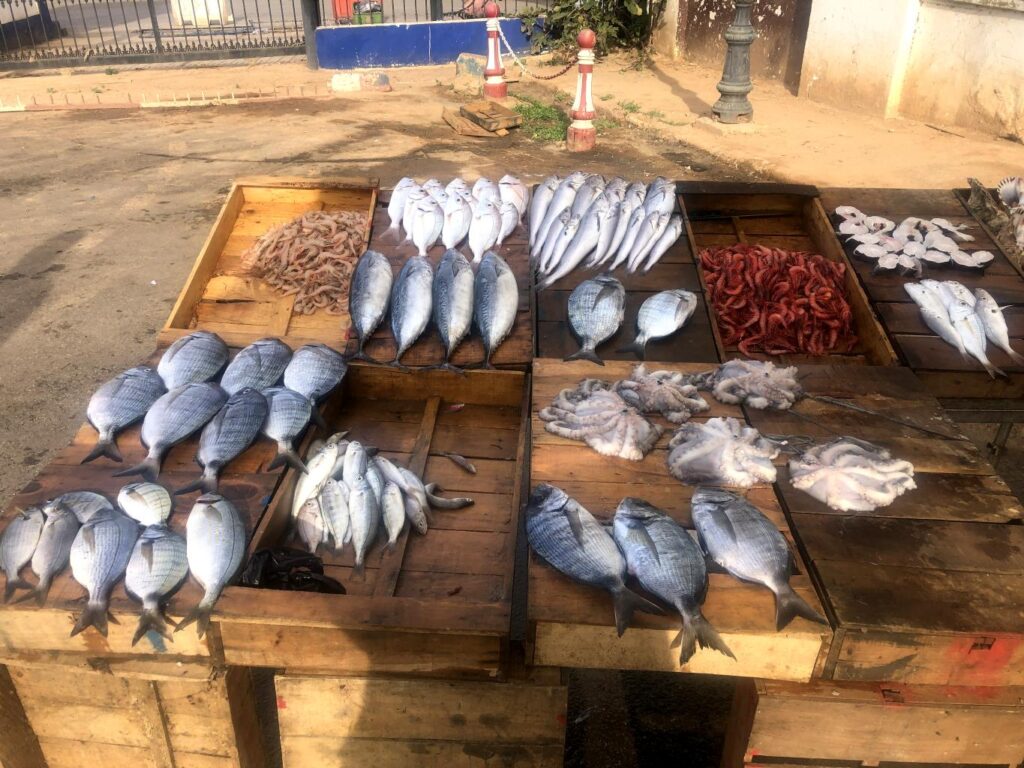
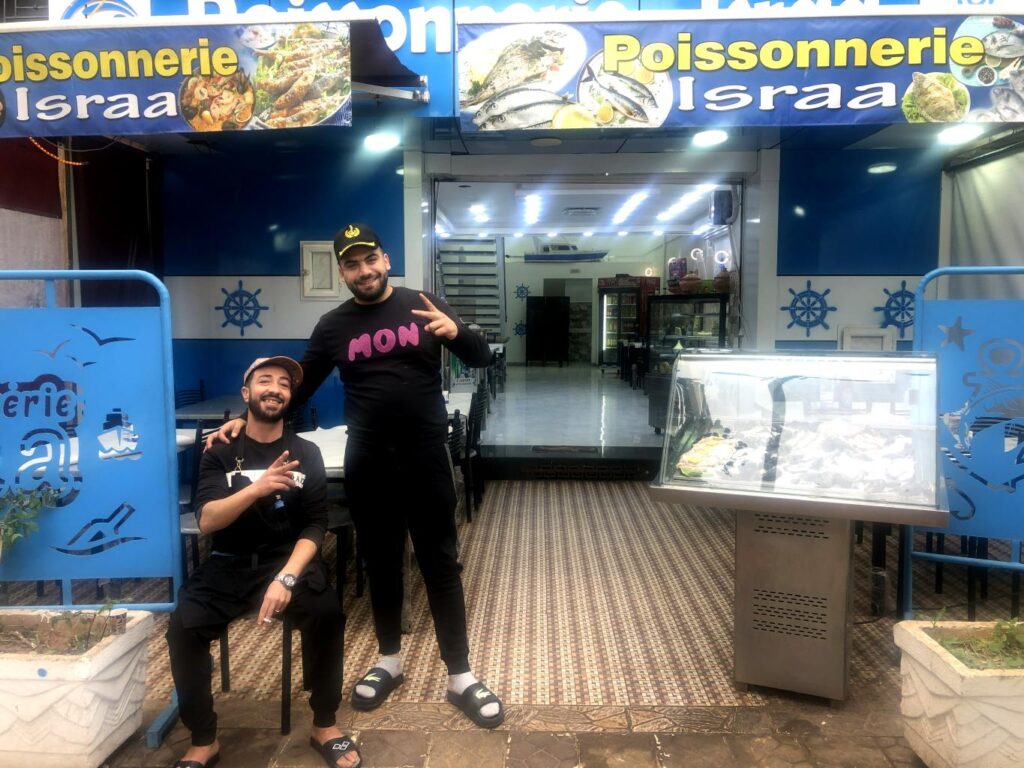
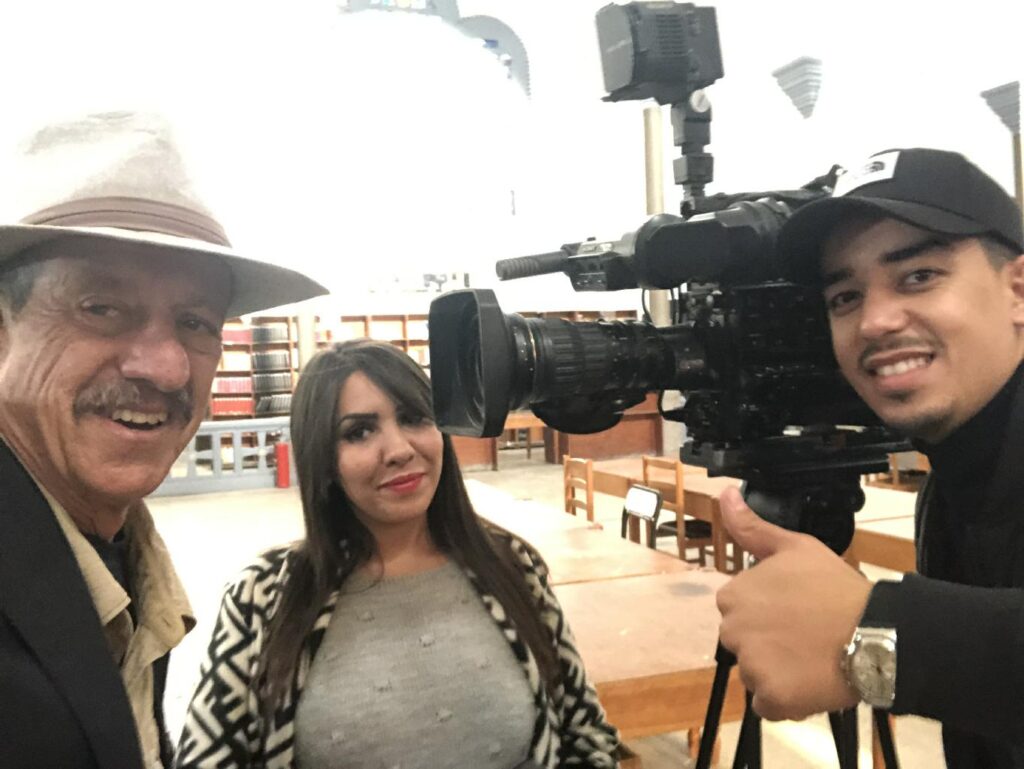
For a big city, Oran is surprisingly calm and relaxing. I think I was the only tourist in Oran. I was interviewed by a television crew who wanted to know my impressions of their city. I enjoyed walking freely through the neighborhoods. I felt very safe here — as I did in all of Algeria. Here’s a video showing what the street outside my hotel looked like on a typical afternoon.
My last stop was Algiers, the capital of Algeria. Like Oran and Constantine, Algiers is an easy city to navigate on foot or by metro — which costs only 10¢ per ride! I spent two days immersed in the bustling cafés, restaurants, shops, markets and streets — always full of people. I visited a museum or two and learned about Algeria’s turbulent past. The Martyrs’ Monument is the iconic symbol of this city. It commemorates the 1.5 million Algerians killed by France in Algeria’s bloody war of independence (1954-1962).
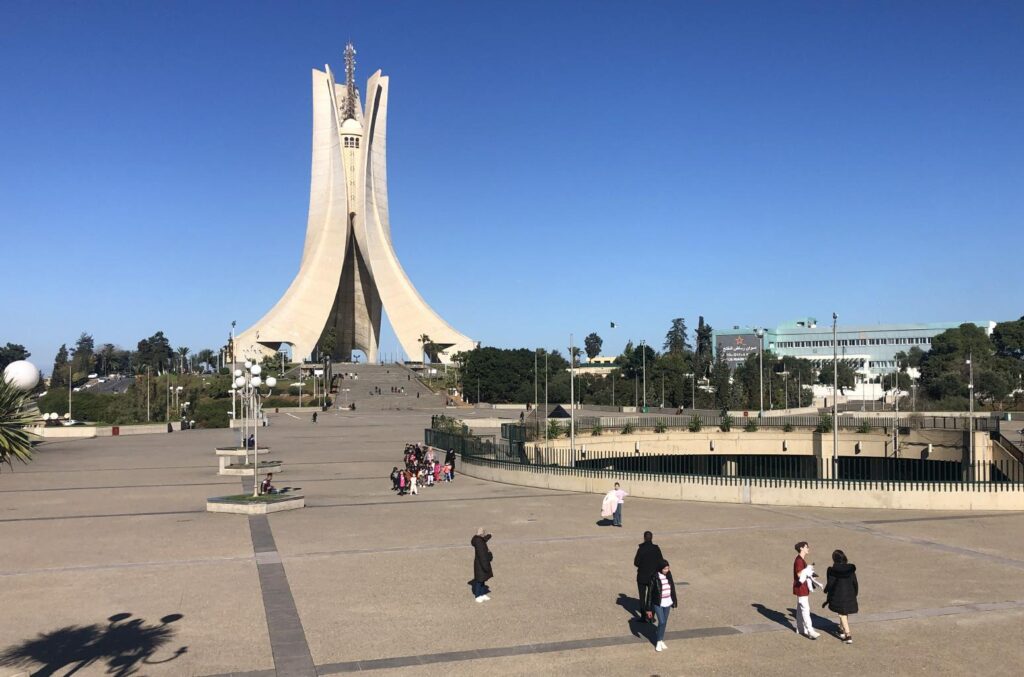
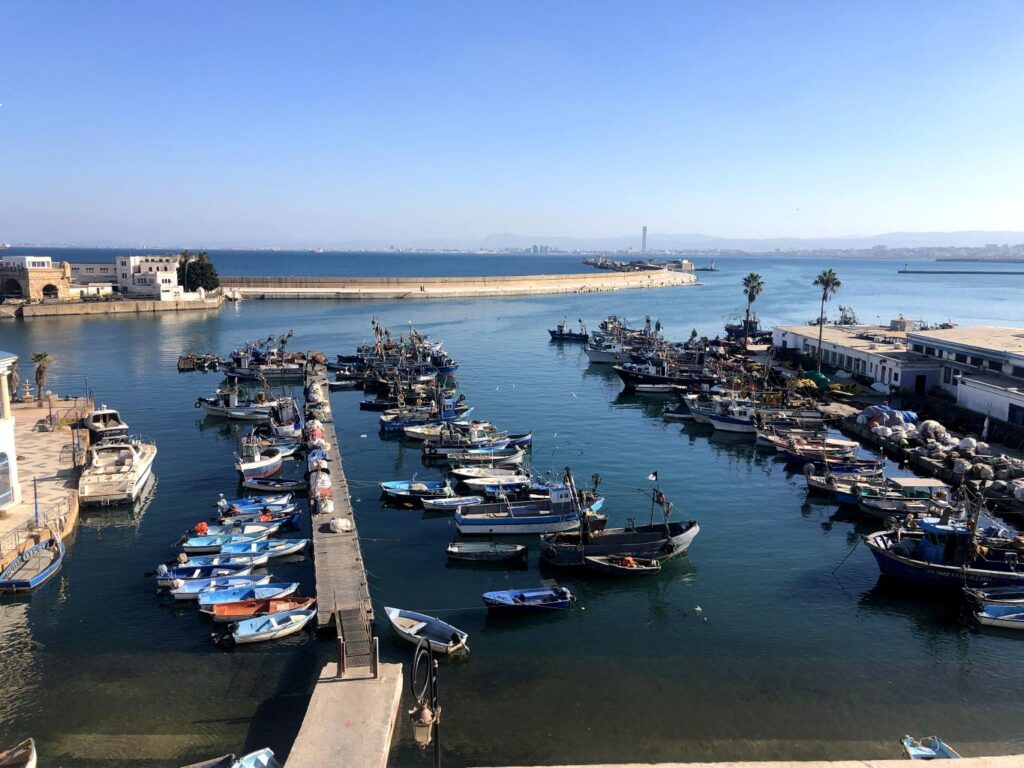
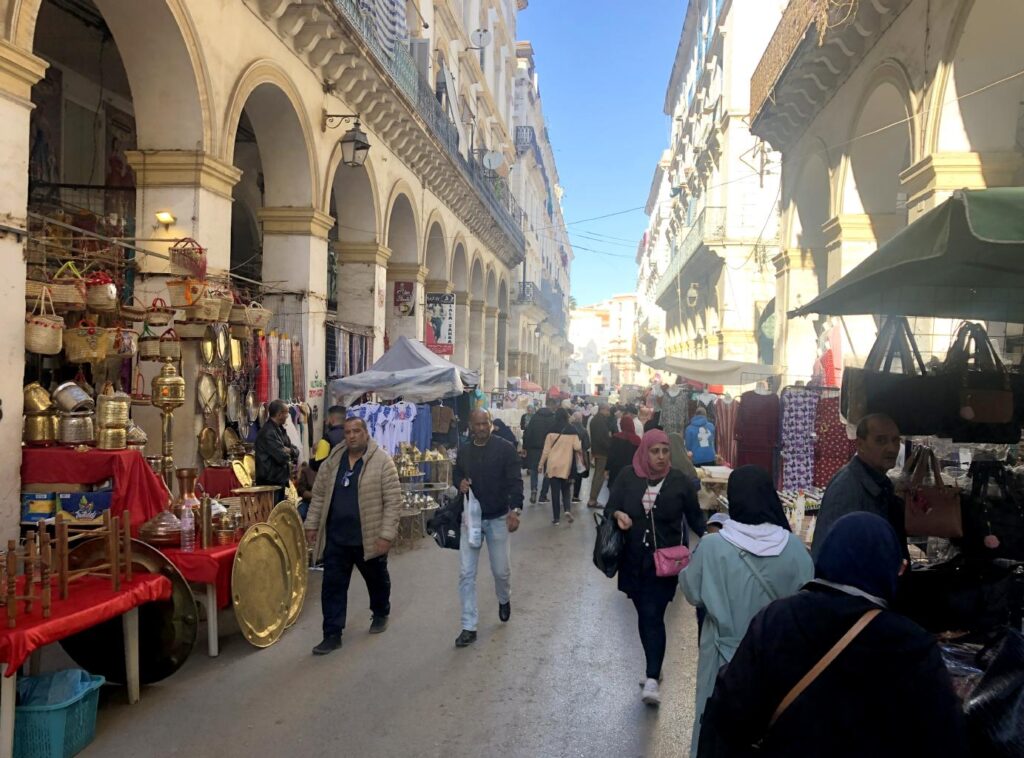
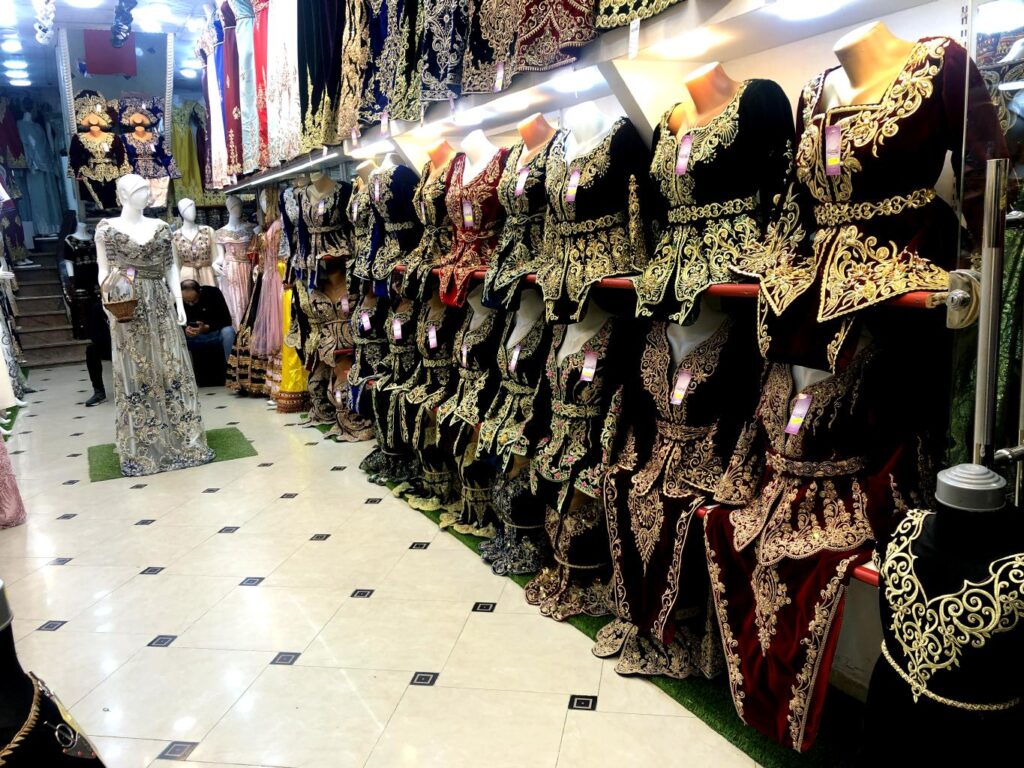
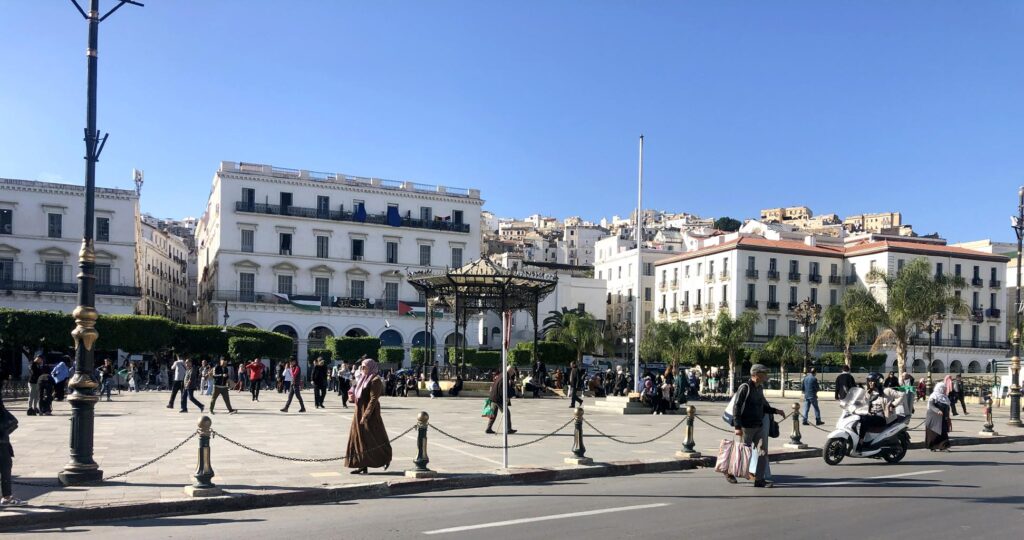
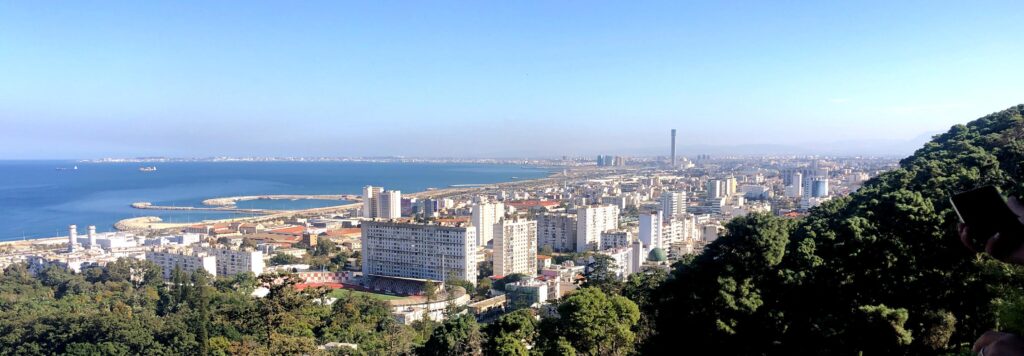
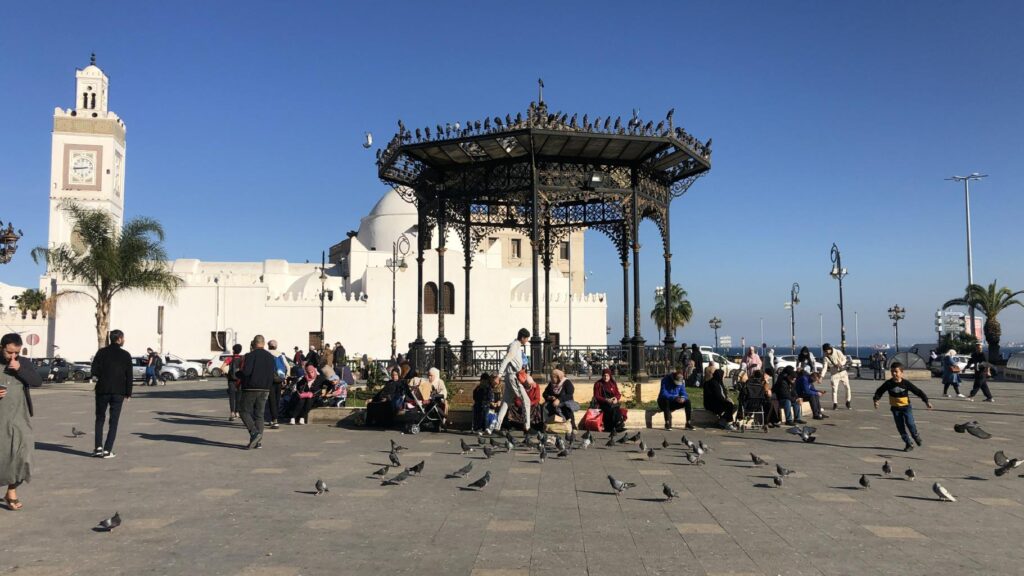
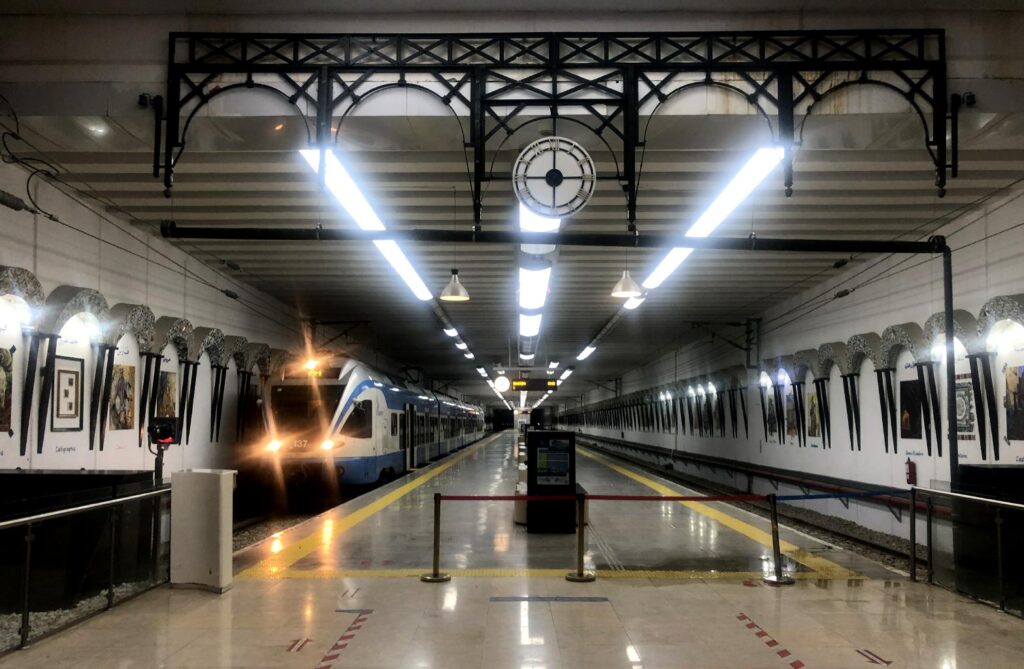
Algeria is one of my favorite adventures in 2023. I was thoroughly impressed by the history, culture, food, hospitality and people of this fascinating country. Recently, the US State Department has upgraded its Algeria travel advisory to level 2 (Exercise Increased Caution). New air routes from Europe to Algeria are opening up.
Algeria is a wonderful and exciting destination. It’s Arab/Muslim culture at its best and most authentic. Transportation, lodging and food are inexpensive. If I didn’t have other places to go this month, I would’ve spent a month here. I’m glad I went when I did. Algeria may soon become the next great travel destination in Africa.
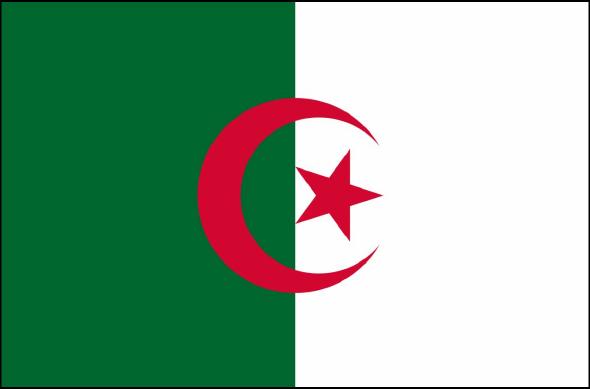
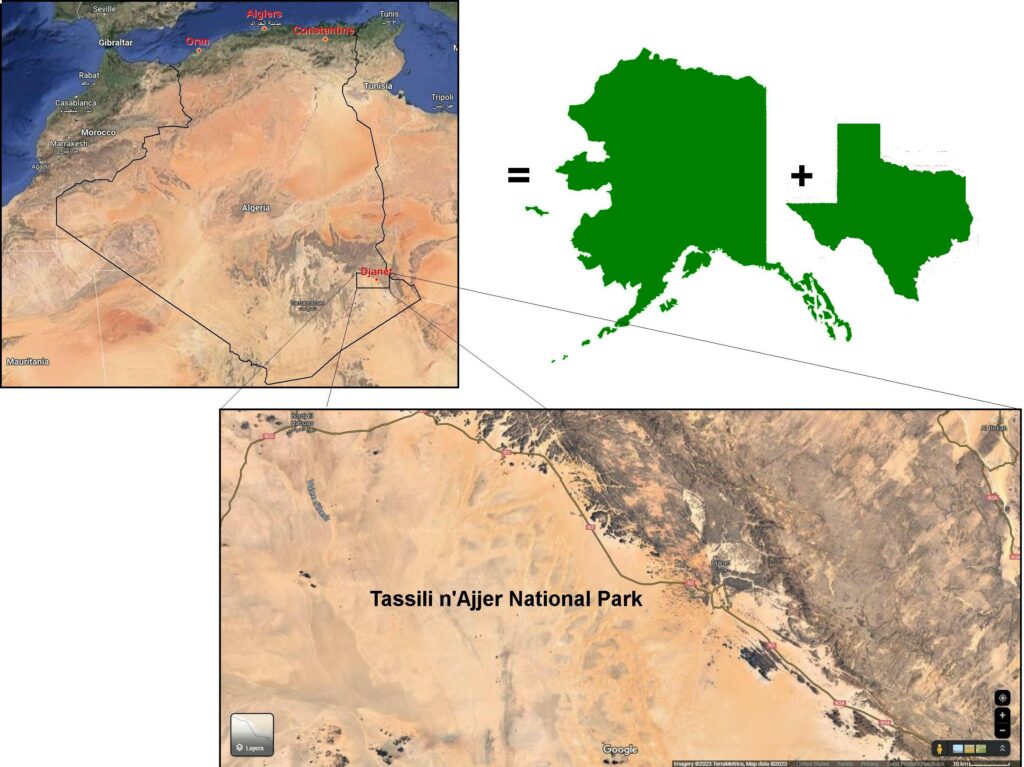


Enjoyed the series on Algeria.
Nick:
Once again, you’ve inspired me to hit the road, the sky, the seas. Your travel stories are terrific. It’s just the way I like to visit the world. I’m really impressed by the way you’ve recorded your adventures. You’re right there on the ground, on the streets. You’re publishing some great stuff. The other day my wife and I were watching a Rick Steves show on PBS. He’s sitting on a terrace overlooking the Adriatic, sipping wine, after a day of guided tours through museums followed by feasting in touristy restaurants and cafes. The leisure traveler. Upscale hotels, cruise ships, and tour buses. So different from the way you’re seeing the world. Thanks for sharing so much of your experiences.
OMG! I now know to where I want to go next! This country sounds (and looks) like one could spend years there, and still not be through seeing all it has to offer. We used to go to an African-themed fête in France, where artisans, vendors, and musicians would sell their wares and play their music, all from the countries bordering the Mediterranean Sea. We looked forward to participating, meeting the different people, and learning about their countries. The Algerian wares, artwork, and people always fascinated me. What an adventure you had. And the Tassili n’Ajjer National Park looks amazing! You are an inspiration. Thank you.
What fantastic scenery! Algeria is now on my list of places to go.
Hi, Nick. So glad you were able to go there and explore. Love the elephant rock, so cool.
Oran was the destination port for my Dad’s WWII convoy. He was on one of 6 escort ships that protected Destroyers or Merchant ships carrying supplies. He docked there 7 times. Thank you for letting me (us) see Oran.
Safe travels to you, Nick, and Merry Christmas.
Josie😊
Great installment, Nick! Loved the music. I’d read that Tuaregs were great musicians but had never actually heard them.
Do Algerians consider themselves Arab or Berber? I would guess they’re really both. Just curious.
Another great adventure! Our trip to Algeria only included Algiers. Constantine, and the Roman ruins of Djémila and Dougga. The Tassili n’Ajjer National Park was amazing.
Thanks for sharing. Cool places to visit.
Oh my gosh; another fascinating travelogue. I’ve never considered Algeria since I thought it was off limits. Now you’re encouraged me to figure out how to visit the country and people. Thanks so much.
What a delightful, culturally rich place. Thanks for sharing!
It is really great to have followed you all along and see the huge leaps in your photography and presentation. Not that they weren’t great to begin with. Very well done indeed. Makes me want to go there!